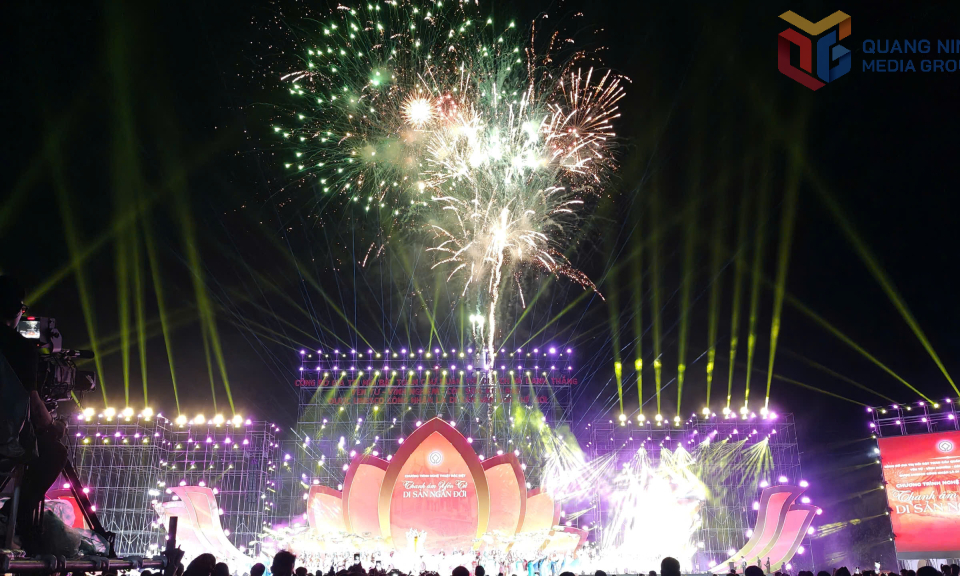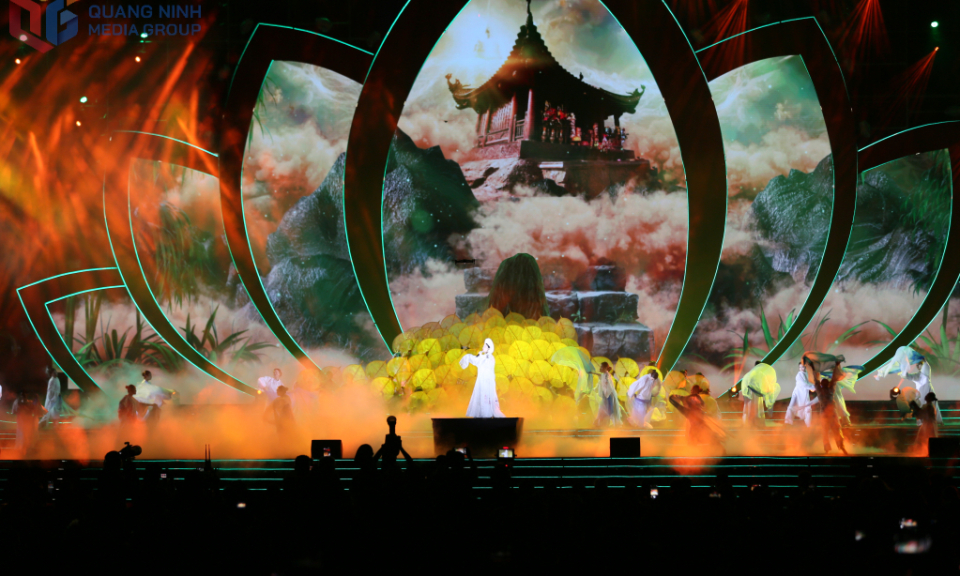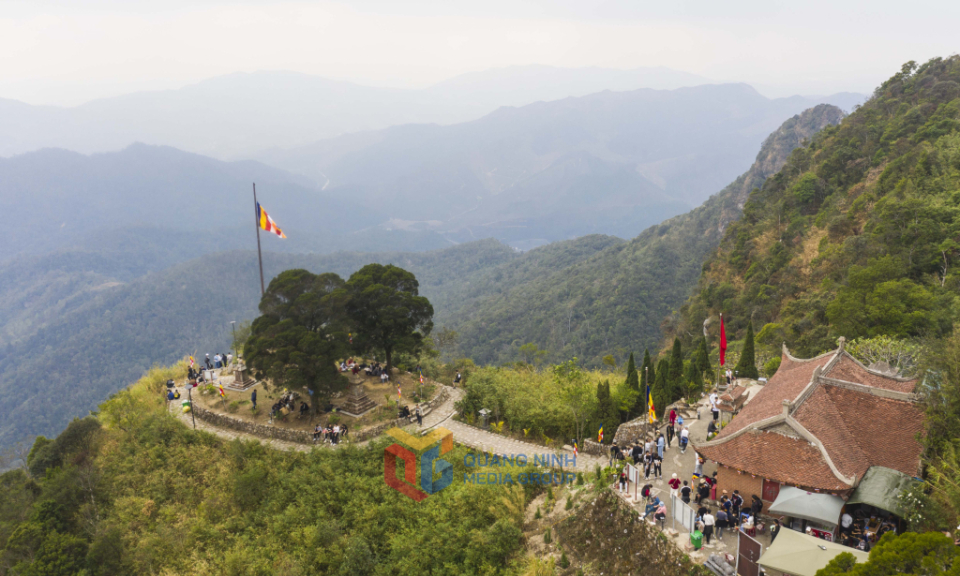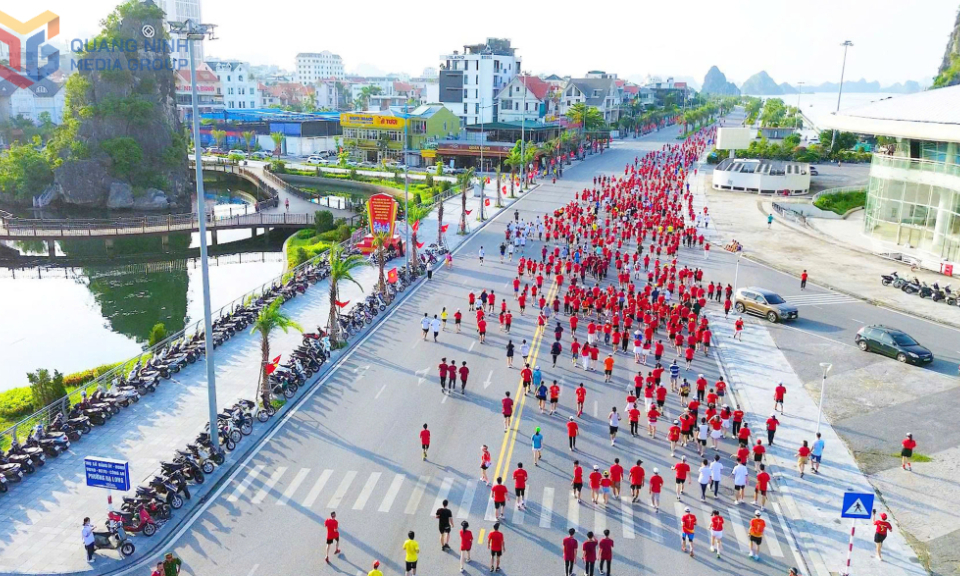In pandemic dominated 2021, Vietnam paints a picture of resilience
It’s been a very challenging year, dominated by the worst Covid-19 wave to date, but Vietnamese people from all walks of life have united to overcome its impacts.
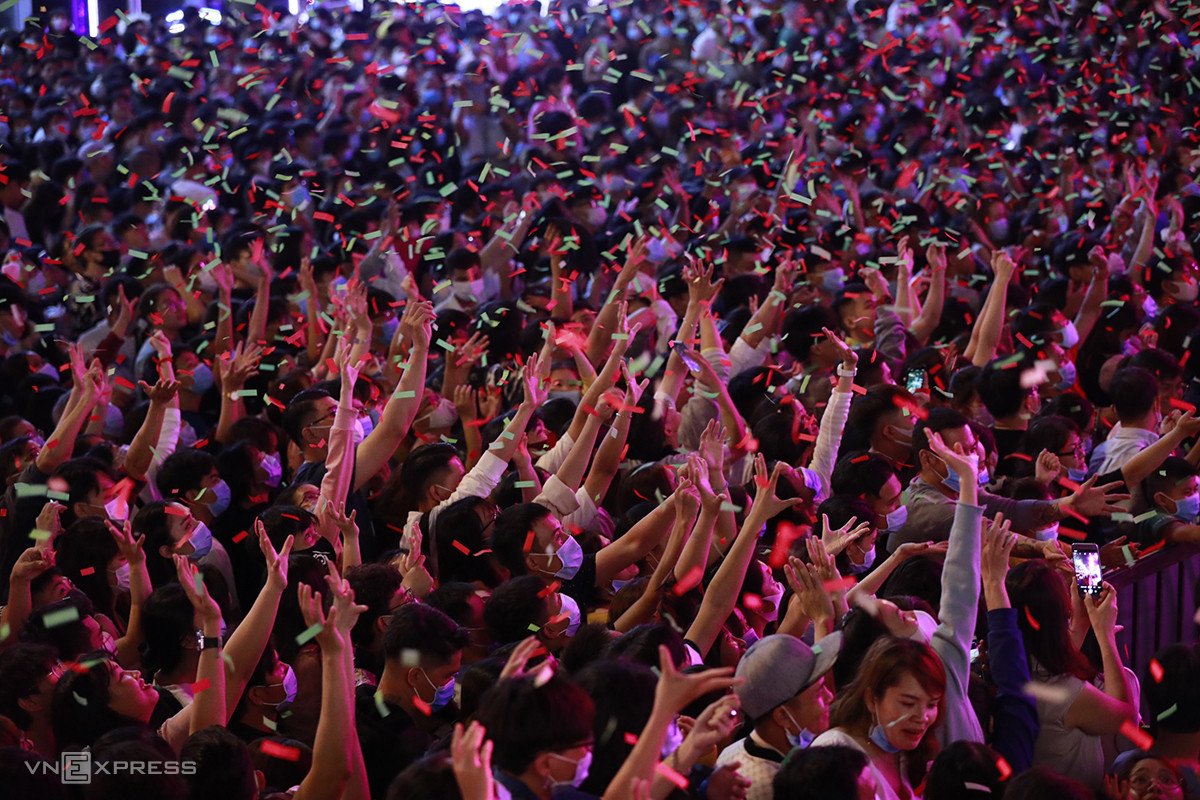
Happy beginning: People celebrate the advent of 2021 at a countdown event on the Nguyen Hue Pedestrian Street in Ho Chi Minh City.
As of New Year's Eve, Vietnam had gone 30 days in a row without any Covid-19 community transmission, prompting many foreigners to say they were lucky that they could celebrate the event in Vietnam. Photo by Huu Khoa
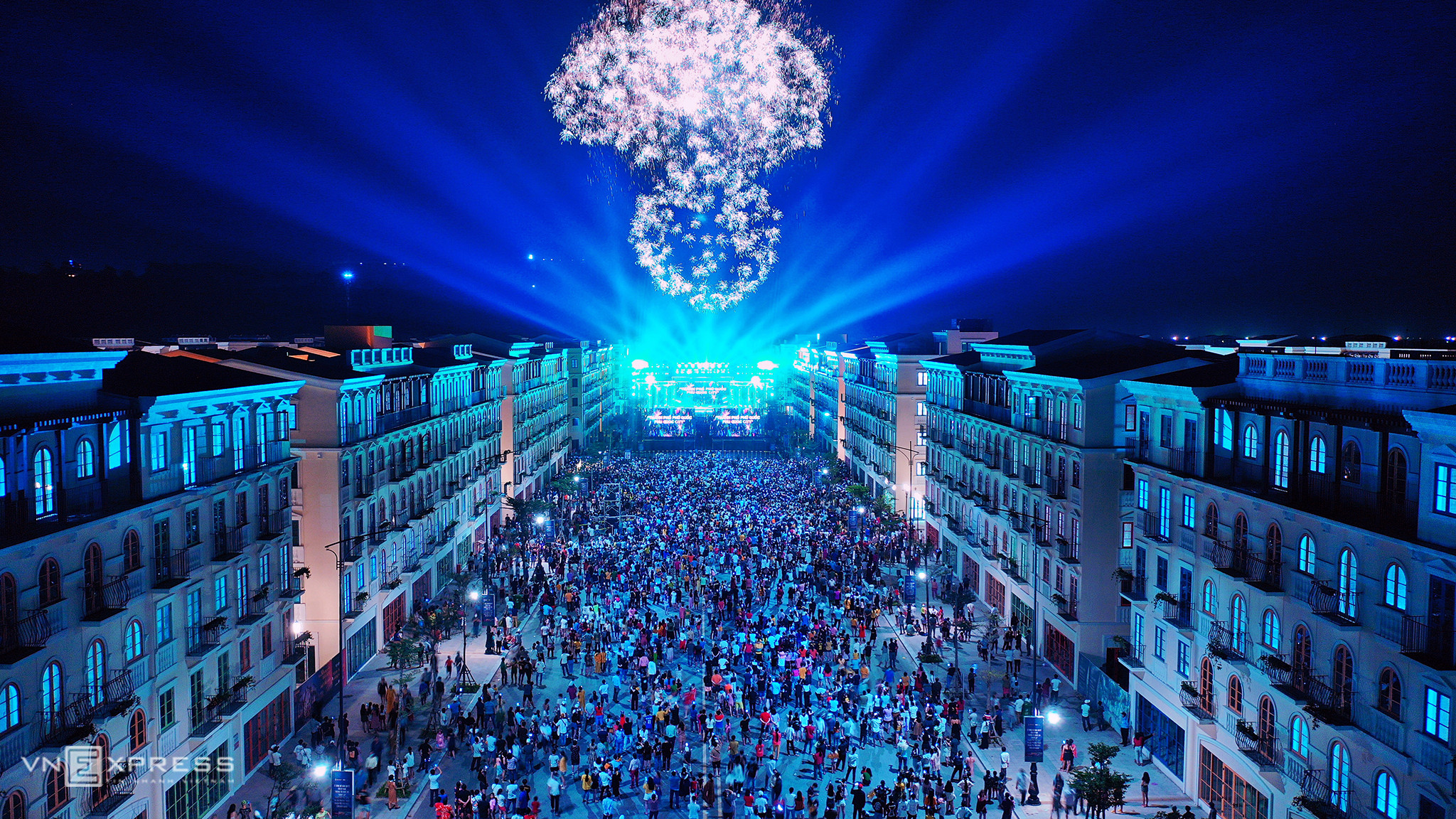
First island city: Thousands join a ceremony on January 8 to officially announce the establishment of Phu Quoc City.
Phu Quoc, Vietnam's largest island off its southern coast that has become increasingly popular on the global tourism map, is the nation's first ever island city. Photo by Ngoc Thanh
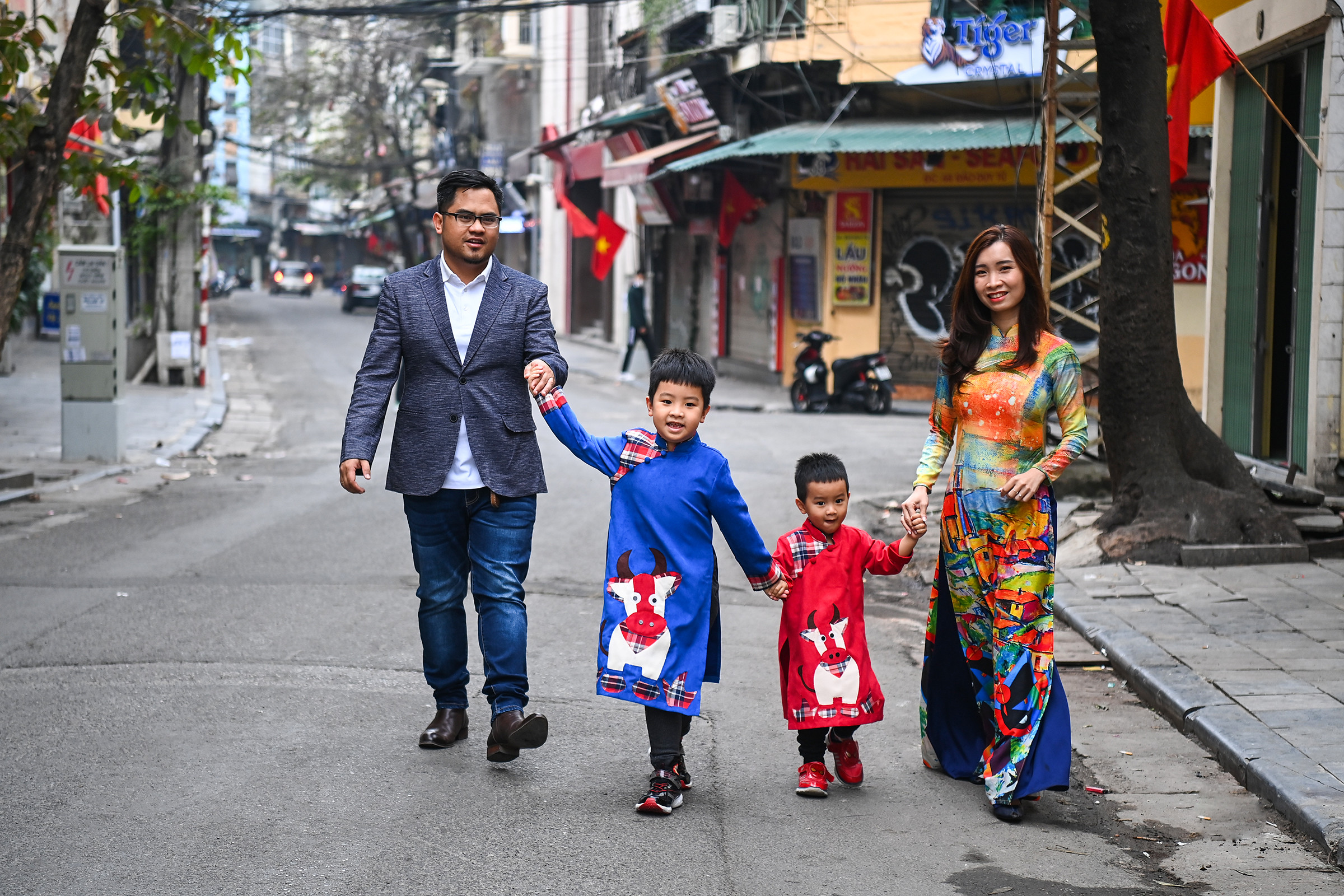
Bullish feeling: A local family in Hanoi on their way to visit relatives on the first day of the Lunar New Year, February 12.
The mother and two boys are wearing the ao dai, the traditional Vietnamese tunic. The boys' costumes feature the ox, the lunar year's zodiac animal for 2021. Photo by Giang Huy
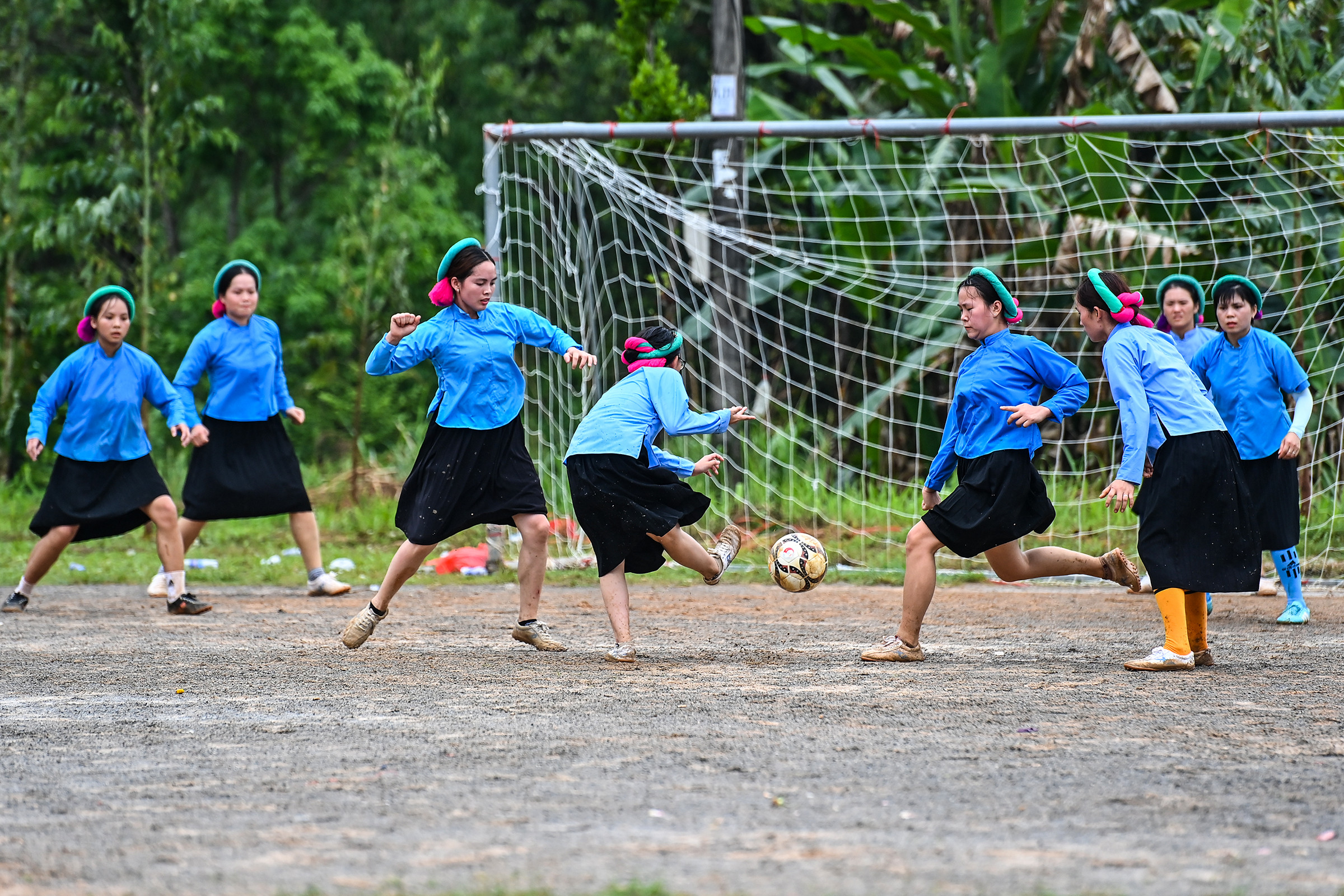
Play ball: Women of the ethnic San Chi group play football as part of the Binh Lieu District Ethnic Culture and Sports Festival held in late April in the northern Quang Ninh Province.
Instead of shorts and jerseys, the San Chi played the game in their traditional costumes, with the rival teams distinguished by the shades of their blue shirts. Photo by Giang Huy
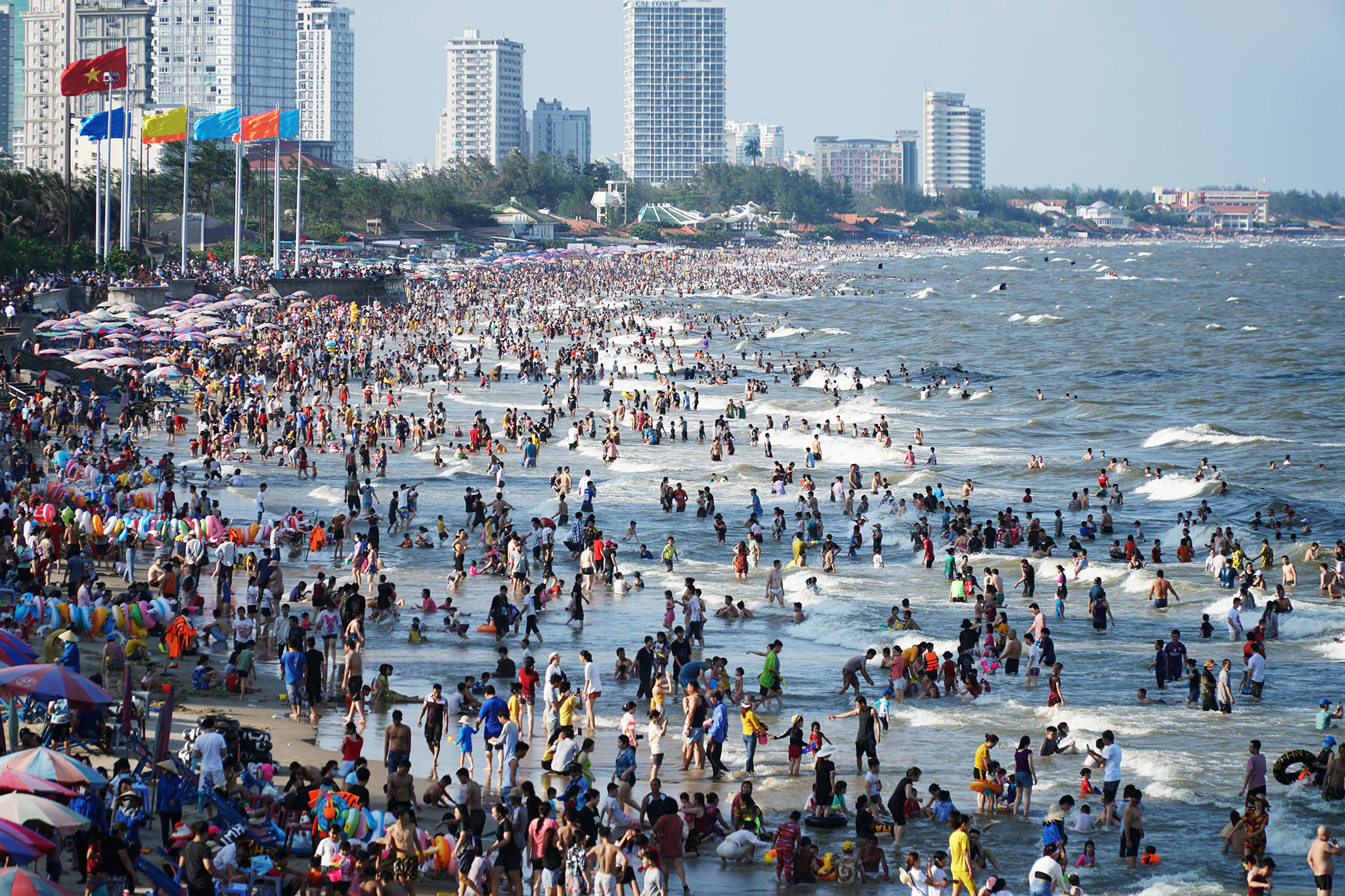
Storm before the storm: People flocked in the hundreds of thousands to the beach of Vung Tau in Ba Ria-Vung Tau Province that borders Ho Chi Minh City, April 30. Photo by Truong Ha
During the four-day holiday to celebrate Vietnam’s Reunification Day (April 30) and the Labor Day (May 1), huge crowds flocked to tourist hotspots across Vietnam even as Covid-19 was making a comeback. At that point, 16 new domestic cases had been confirmed after Vietnam had gone over a month with no Covid-19 community transmission. Those cases were the first of the fourth Covid-19 wave, by far the most challenging the nation has faced.
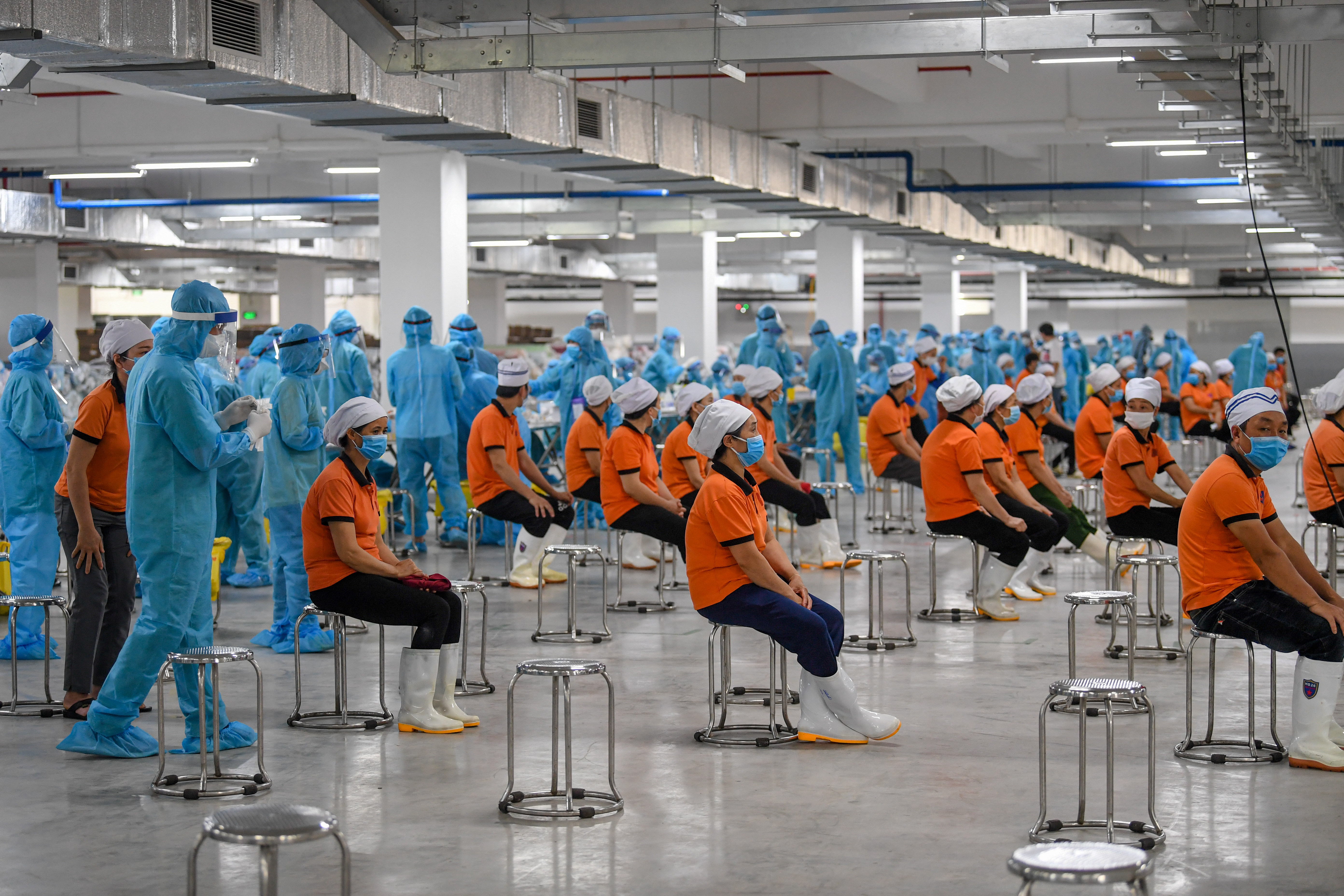
Testing times: Workers at the Quang Chau Industrial Park in Viet Yen District of Bac Giang Province wait to be tested for the novel coronavirus, May 15. Photo by Giang Huy.
A major industrial hub in northern Vietnam, Bac Giang was the nation's biggest coronavirus hotspot in the fourth coronavirus wave that emerged in late April, a status taken over by Ho Chi Minh City in July.
Most of Bac Giang’s cases were workers of its large-scale industrial parks, each of which employ thousands of people from within and outside the province

Clean votes: Every voting booth is equipped with a hand sanitizer bottle in Hanoi’s Hoan Kiem District. Photo by Giang Huy
Vietnam selected new legislators for all administrative levels for the 2021-2026 term on May 23. The election this year was like no other as it took place at a time when the country was tackling its fourth Covid-19 wave, requiring the entire voting process to follow pandemic prevention protocols.
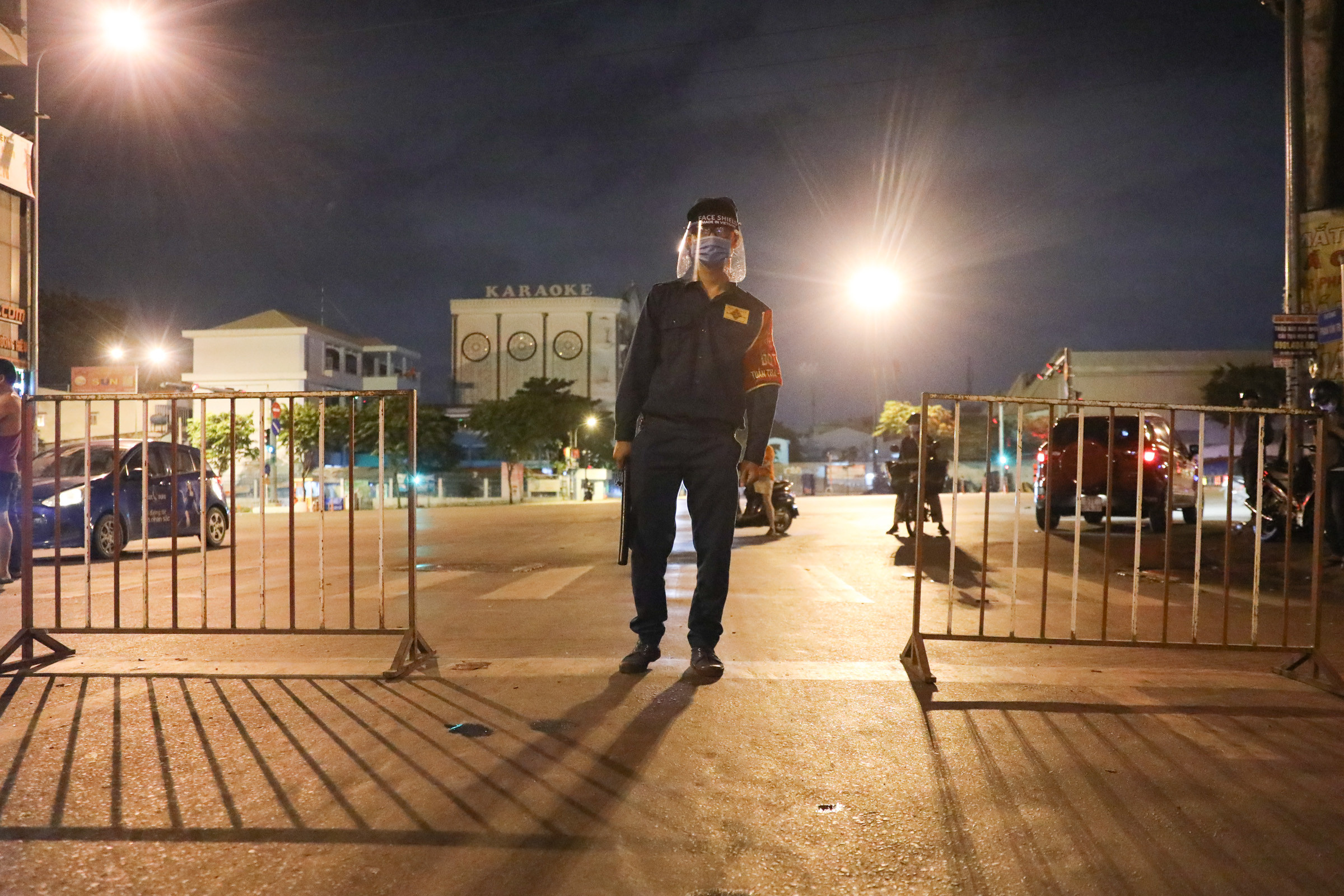
Restricted entry: A militiaman guards a Covid-19 checkpoint on Phan Van Tri Street in Go Vap District, May 31, 2021. Photo by Quynh Tran
Following the fourth Covid-19 wave, Go Vap became the hotspot of the outbreak in Ho Chi Minh City in May, with first cases detected at a Christian congregation called Revival Ekklesia Mission on May 27. By then, the city had already suspended several activities, including religious gatherings.
With cases linked to the mission quickly spreading to other districts in just a few days, the southern metropolis ordered social distancing measures across the city on May 31.
Little did Saigonese know then that the measures would escalate to the strictest level of social distancing and last for four months.
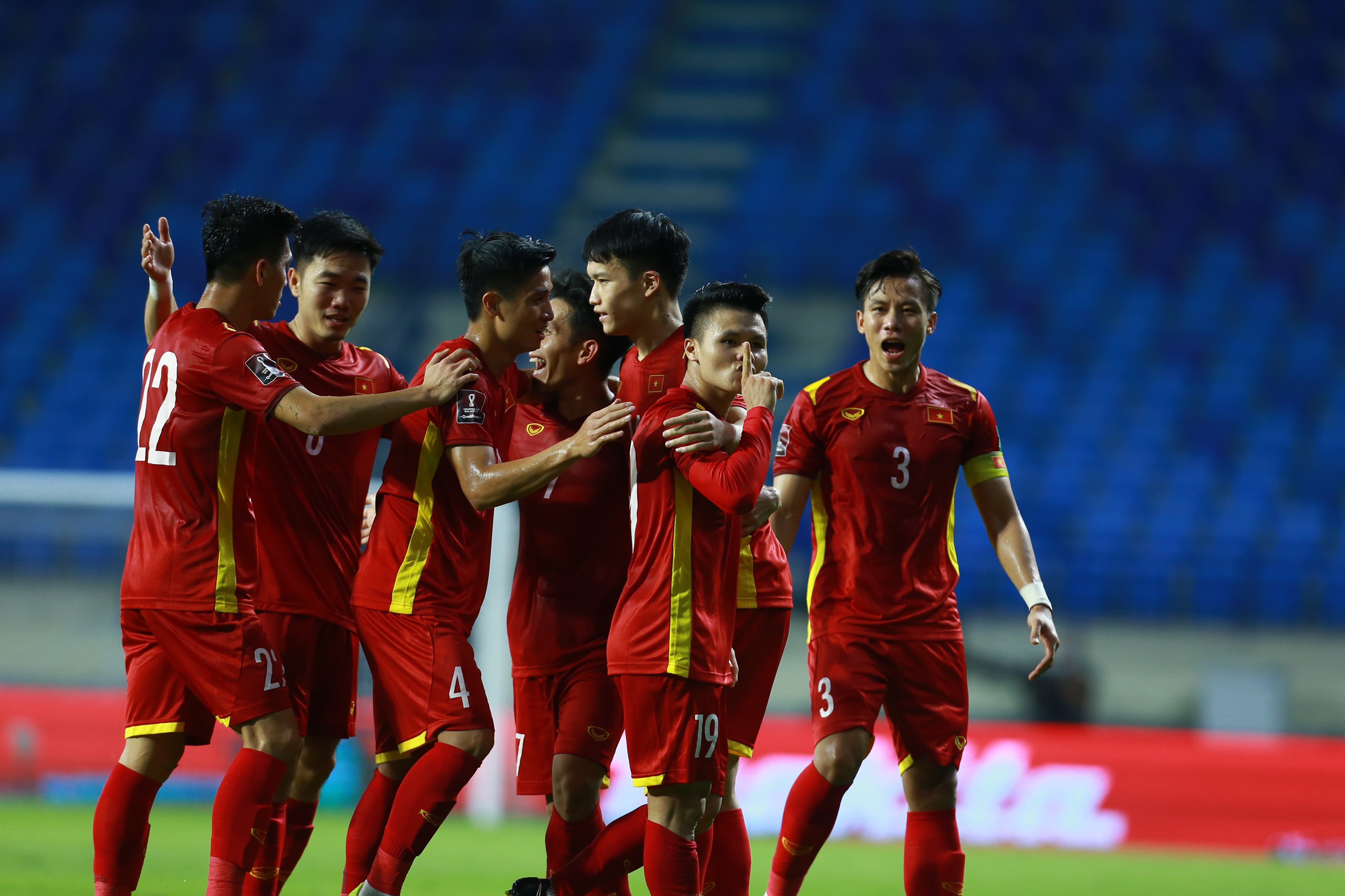
Making history: Vietnamese football players celebrate after scoring in a match against Indonesia during the second round of the 2022 World Cup Asian Qualifiers in Dubai on June 7. Photo by Lam Thoa
For this round, Vietnam were in group G with Malaysia, Indonesia, Thailand and the UAE. Of the eight matches, Vietnam won five, drew two and only lost their last match against the UAE on June 15. The nation advanced as one of the five best second-placed teams, making it the first time ever that Vietnam made it to the final round of the World Cup qualifiers.
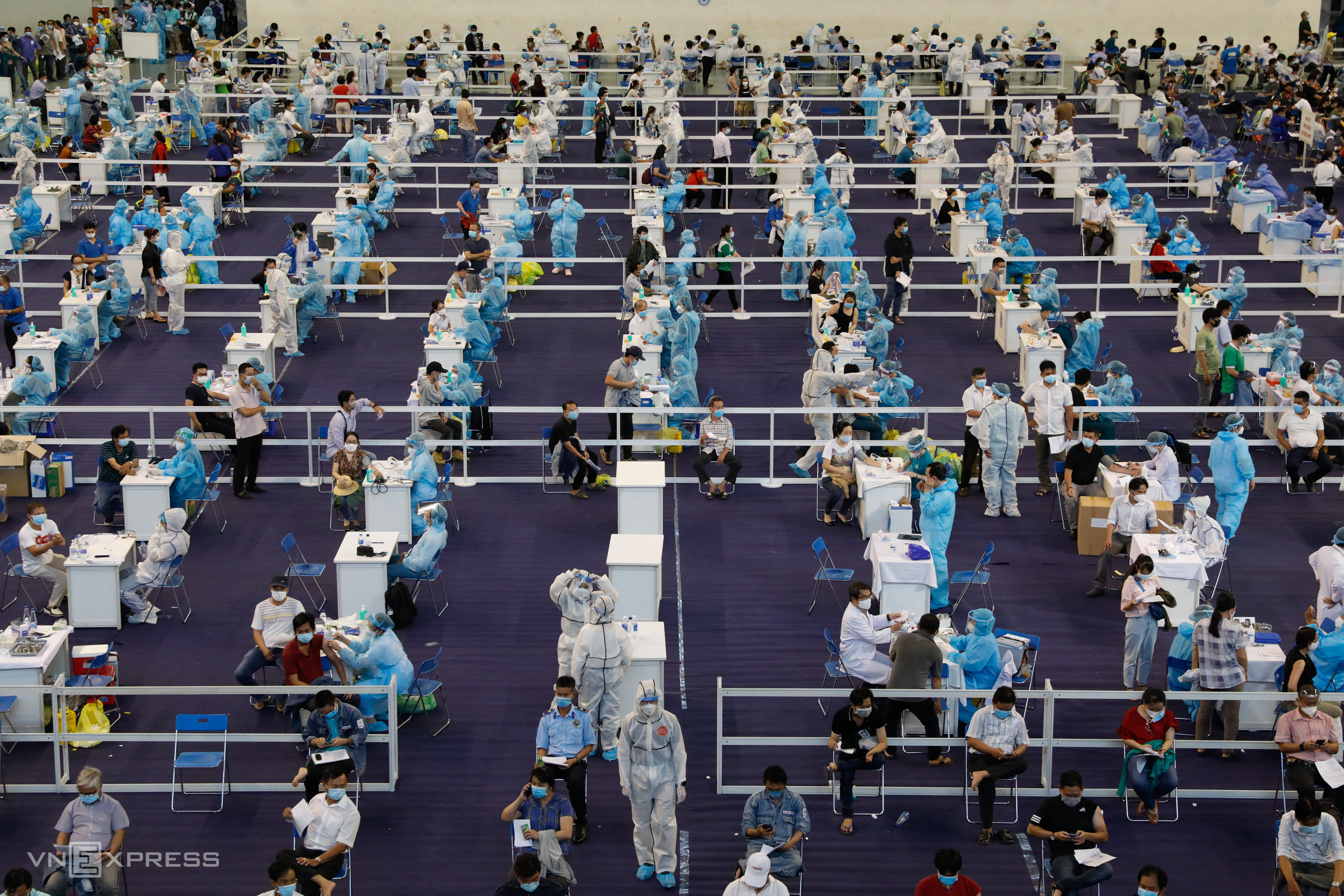
Shot therapy: Covid-19 vaccination site at the Phu Tho Stadium in HCMC’s District 11, June 24. Photo by Huu Khoa.
This was part of a major vaccination campaign launched June 19 against Covid-19, the biggest in the city and in Vietnam's history.
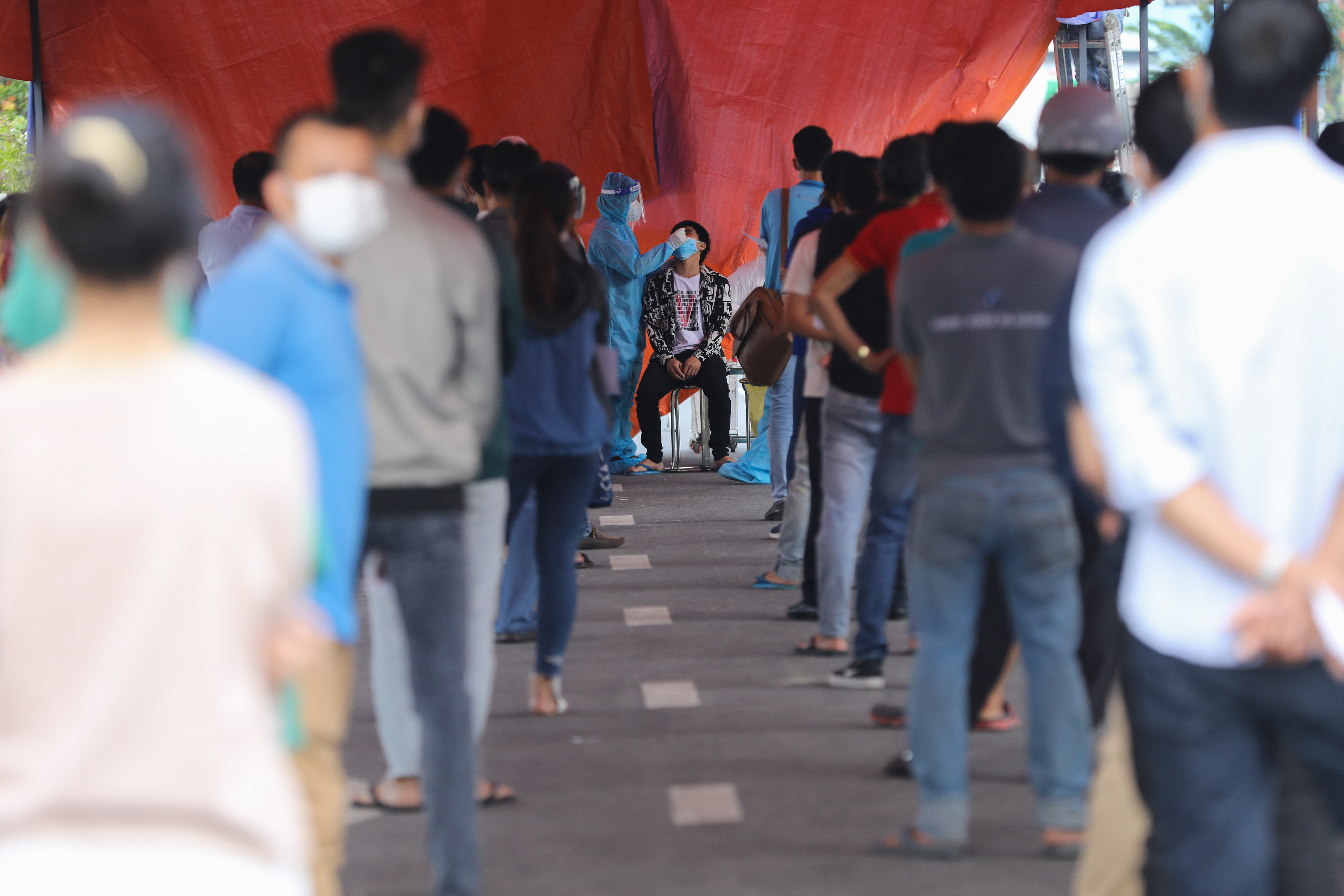
Patient, disciplined: People wait in line during a mass testing event in HCMC’s Go Vap District, July 6.
During the peak of its coronavirus outbreak, HCMC launched at least five mass testing campaigns to test everyone as part of its strategy to detect infections for isolation as soon as possible.
Between Apr. 27 and Sep. 15, the city had taken almost two million samples for the RT-PCR tests and 9.5 million samples for the rapid test.
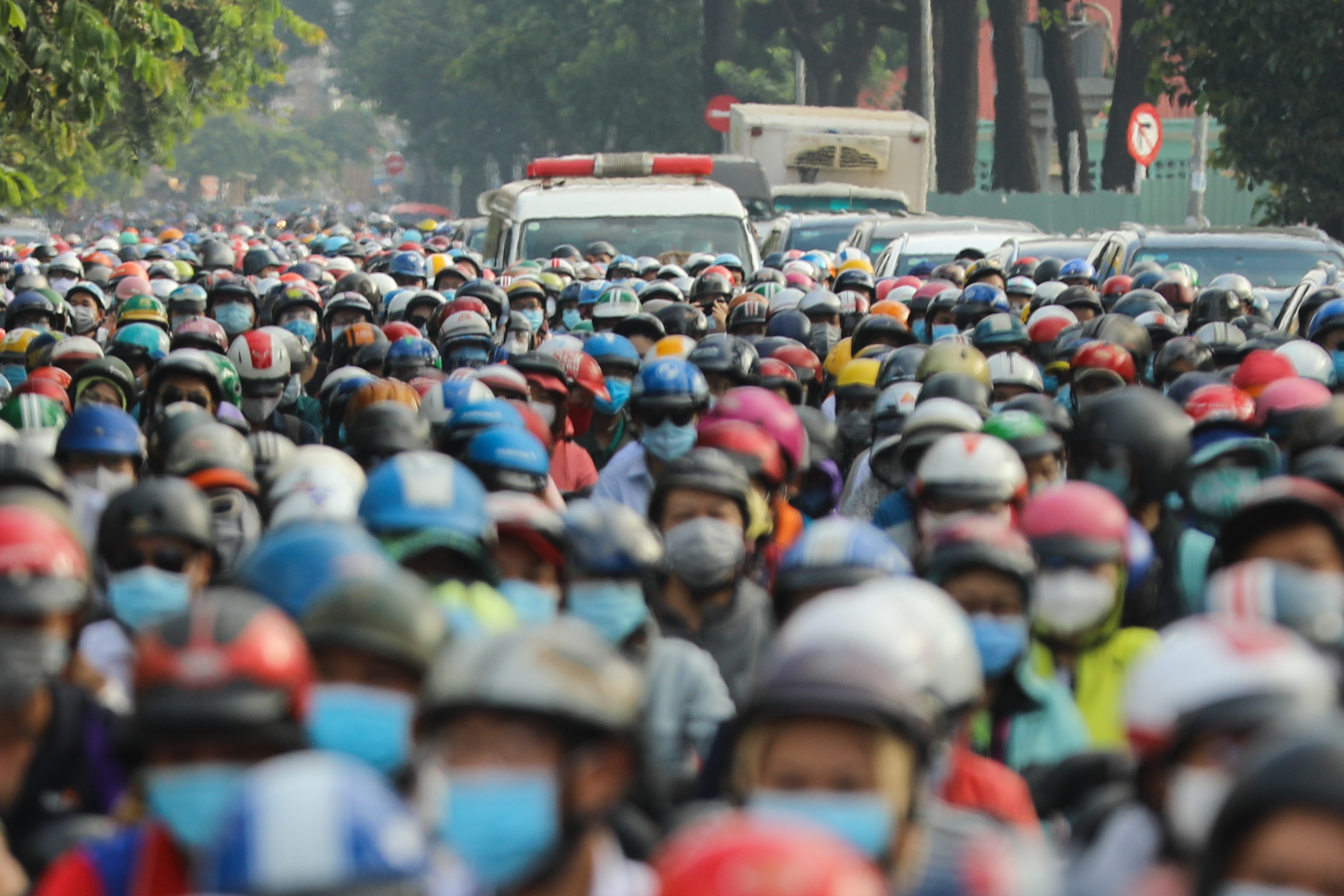
Major breach: A heavy gridlock with no space for vehicles to move on Nguyen Kiem Street in Go Vap District on the morning of July 12, when HCMC entered its fourth day under the most stringent social distancing rules after becoming the epicenter of the fourth wave. Photo by Quynh Tran
The rules required people to stay home and only go out for basic necessities such as buying food or medicines or to work at factories or businesses allowed to remain open. Police officers and militia had to stop people at various checkpoints set up on streets across the city to check documents stating reasons for travel, resulting in huge traffic jams.
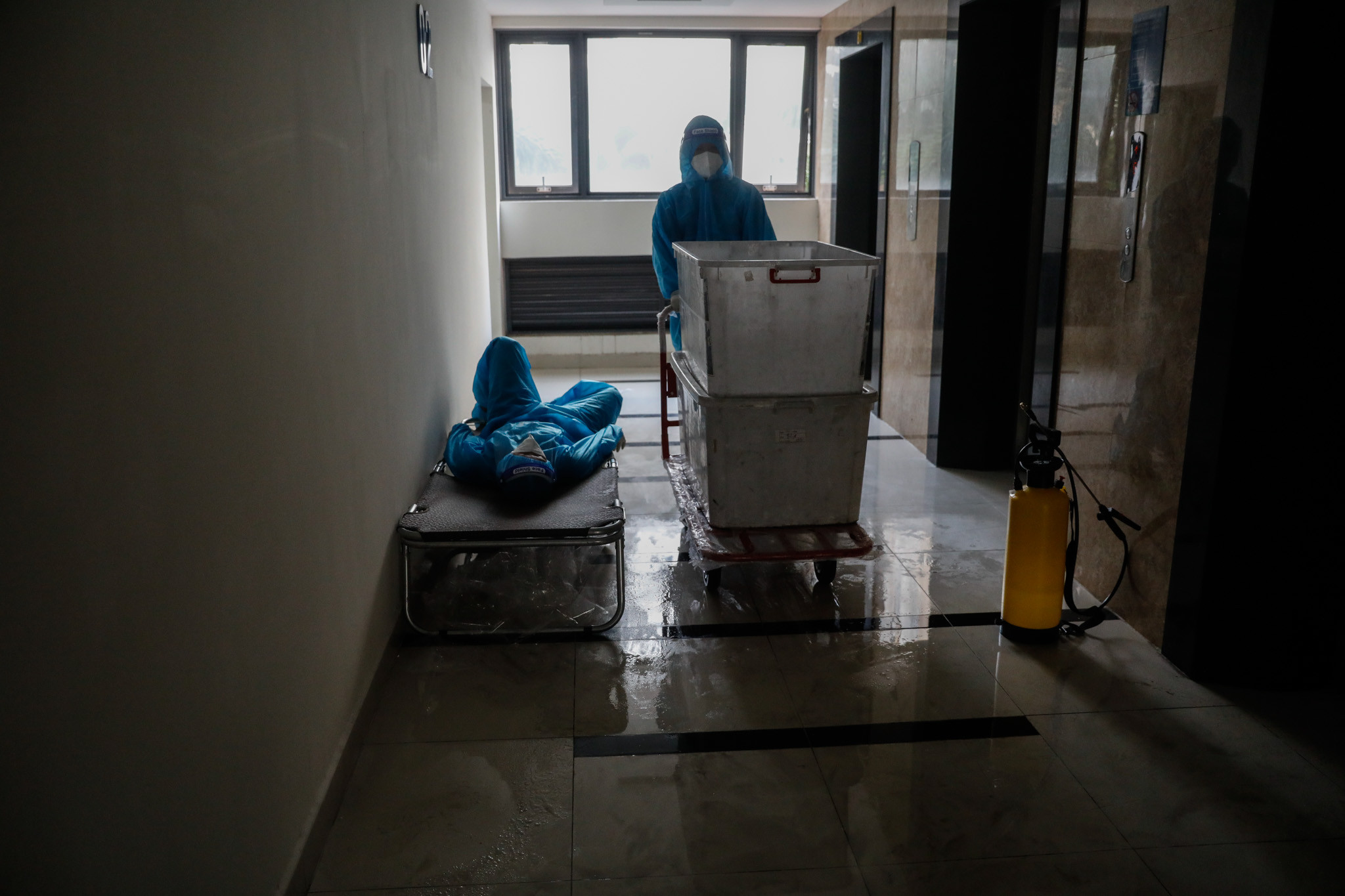
All in: A staff takes rest after delivering food to thousands of patients at a Covid-19 field hospital in HCMC’s Thu Duc City, July 13. Photo by Huu Khoa
Apart from medical workers, many militia members and volunteers were mobilized at field hospitals across the city during the peak of the outbreak in July and August.
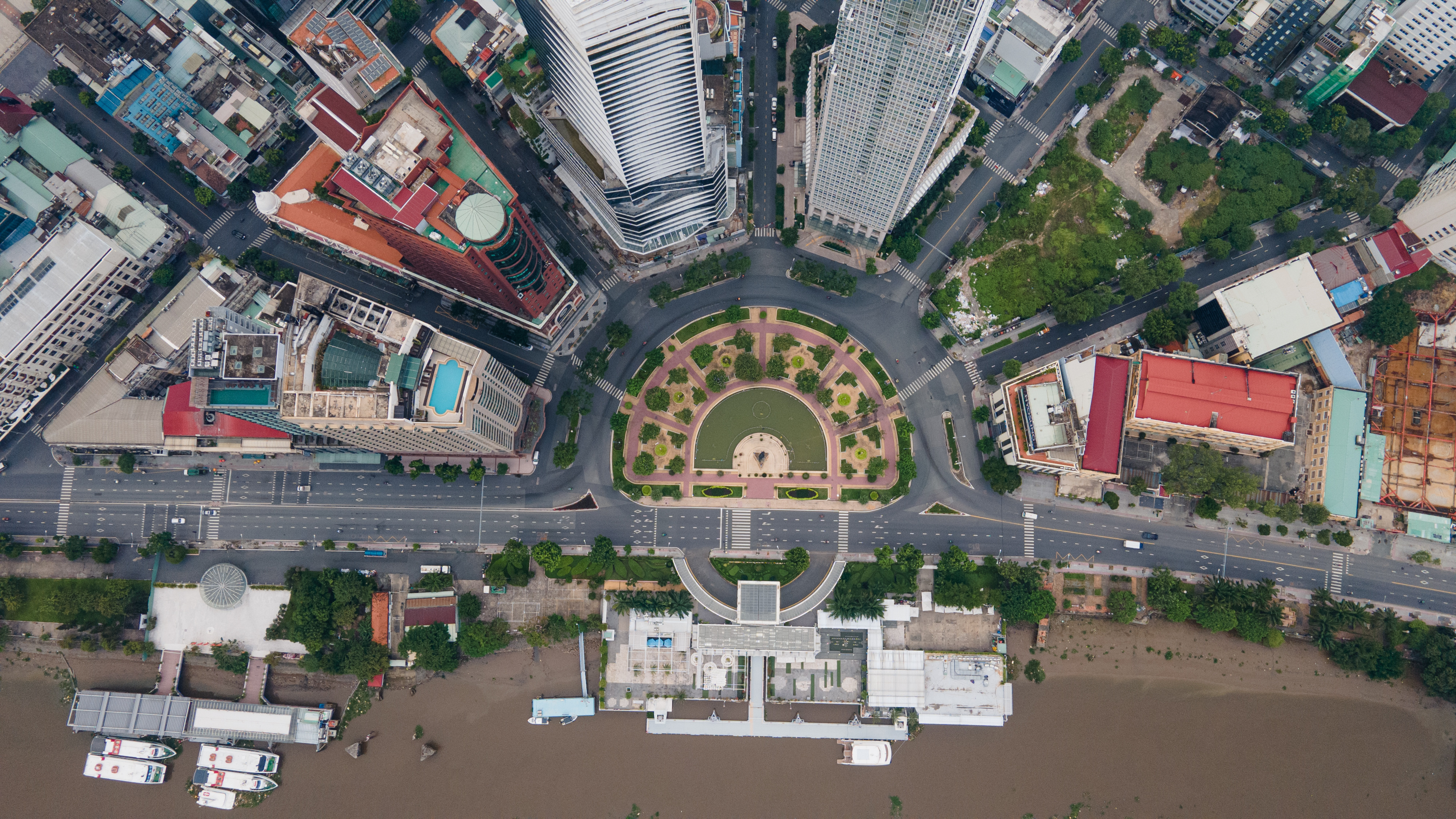
Ghost town: Me Linh Square in District 1, the heart of Ho Chi Minh City, is completely deserted on August 17 under the strict social distancing rules in force. Photo by Thanh Nguyen
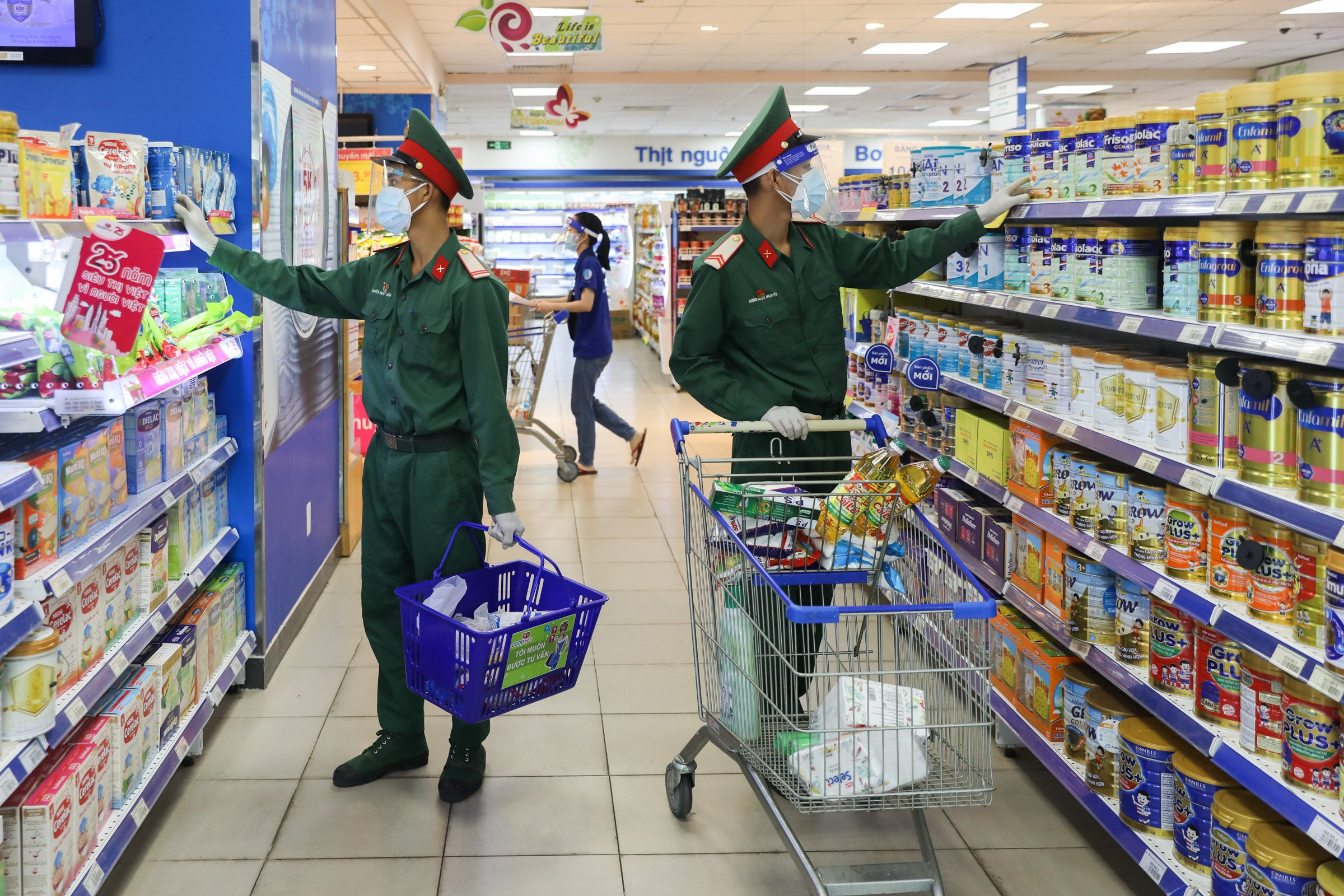
Shopping soldiers: Soldiers of the 5th Infantry Division of the 7th Military Region, which commands armed forces defending southeast Vietnam including HCMC, purchase basic amenities for residents at a supermarket in Binh Thanh District, August 25. Photo by Quynh Tran
On August 23, HCMC commenced a campaign to tighten coronavirus restrictions, requiring people to "stay where they are," banning everyone from leaving their homes, even for buying food. The aim was to isolate homes from homes, streets from streets and wards from wards. Military forces supported existing teams in the city in all activities to fight the pandemic, including patrolling and treating patients.
For the campaign that lasted for a month in HCMC, the army mobilized more than 30,000 soldiers, more than 98,000 militiamen and 2,000 military doctors and students.
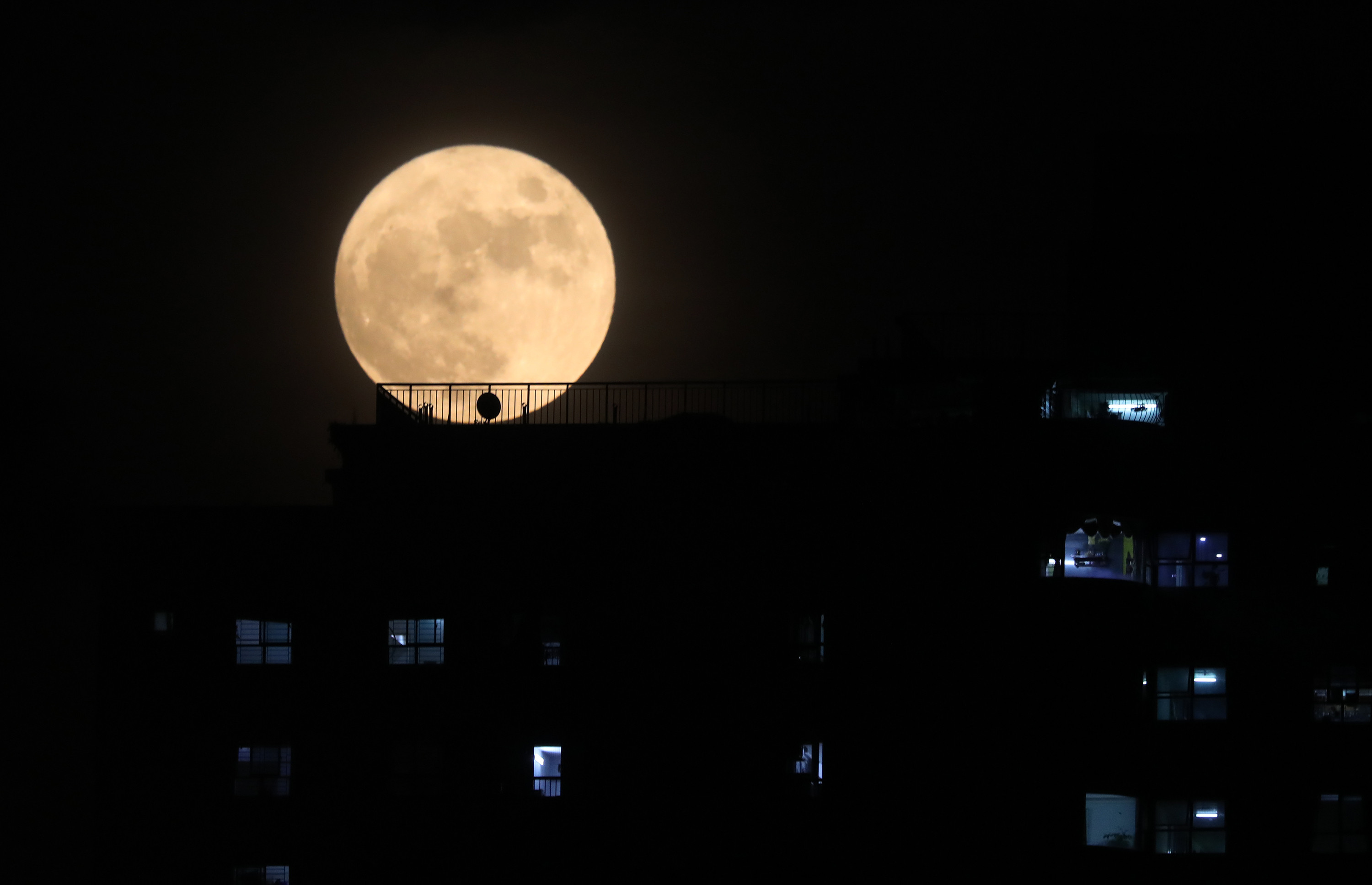
Blue moon: A full moon on Phung Hung Street in Hanoi’s Ha Dong District, August 22. The second full moon in a calendar month is called a “Blue Moon.” Photo by Ngoc Thanh.
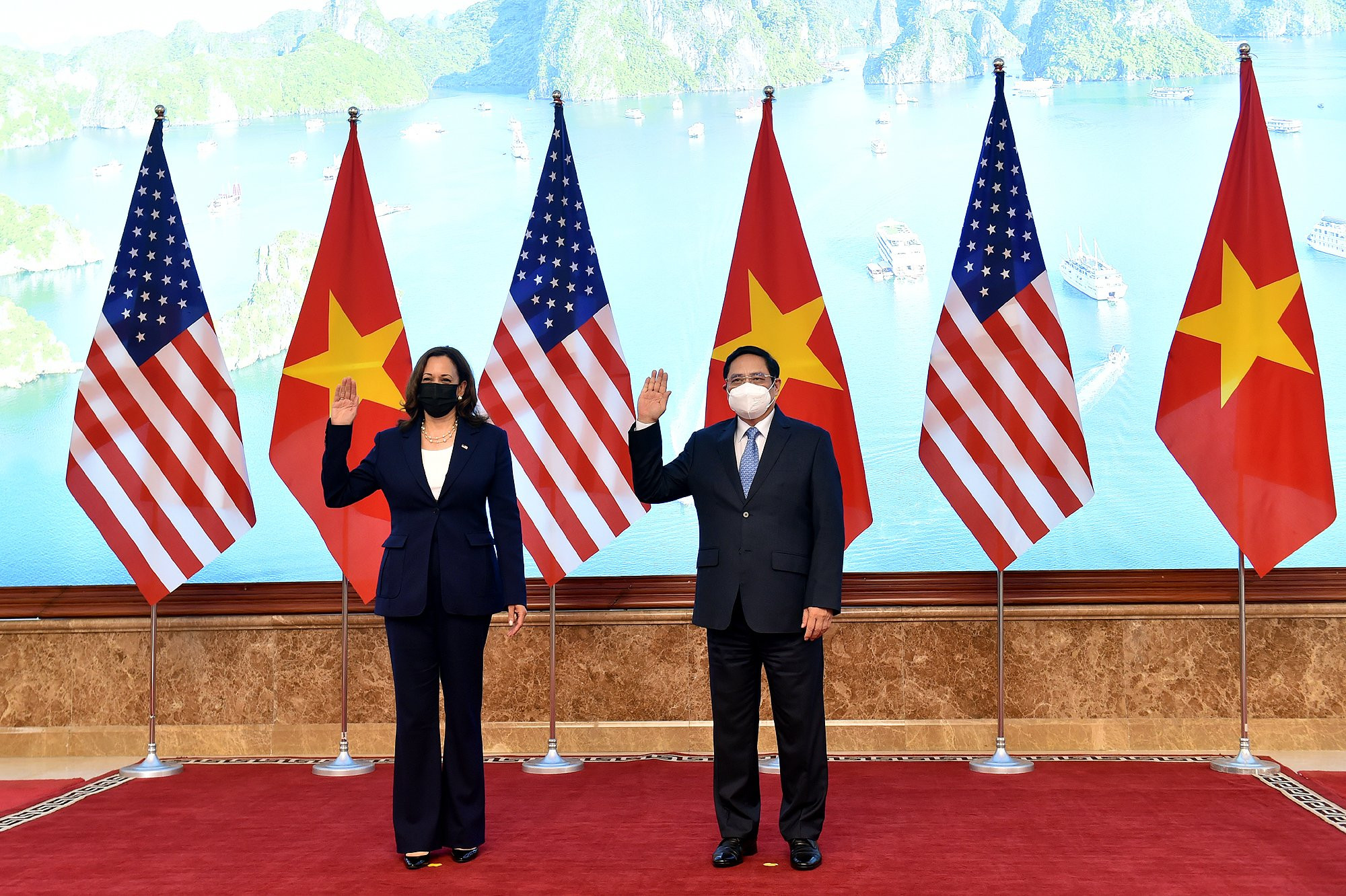
Historic first: U.S. Vice President Kamala Harris and Vietnam Prime Minister Pham Minh Chinh during a meeting at the Government Office in Hanoi, August 25. Photo by VnExpress/Giang Huy
Harris arrived in Hanoi Aug. 24 on a three-day visit to Vietnam at the invitation of her Vietnamese counterpart Vo Thi Anh Xuan, marking the first trip to Vietnam by a sitting U.S. Vice President.
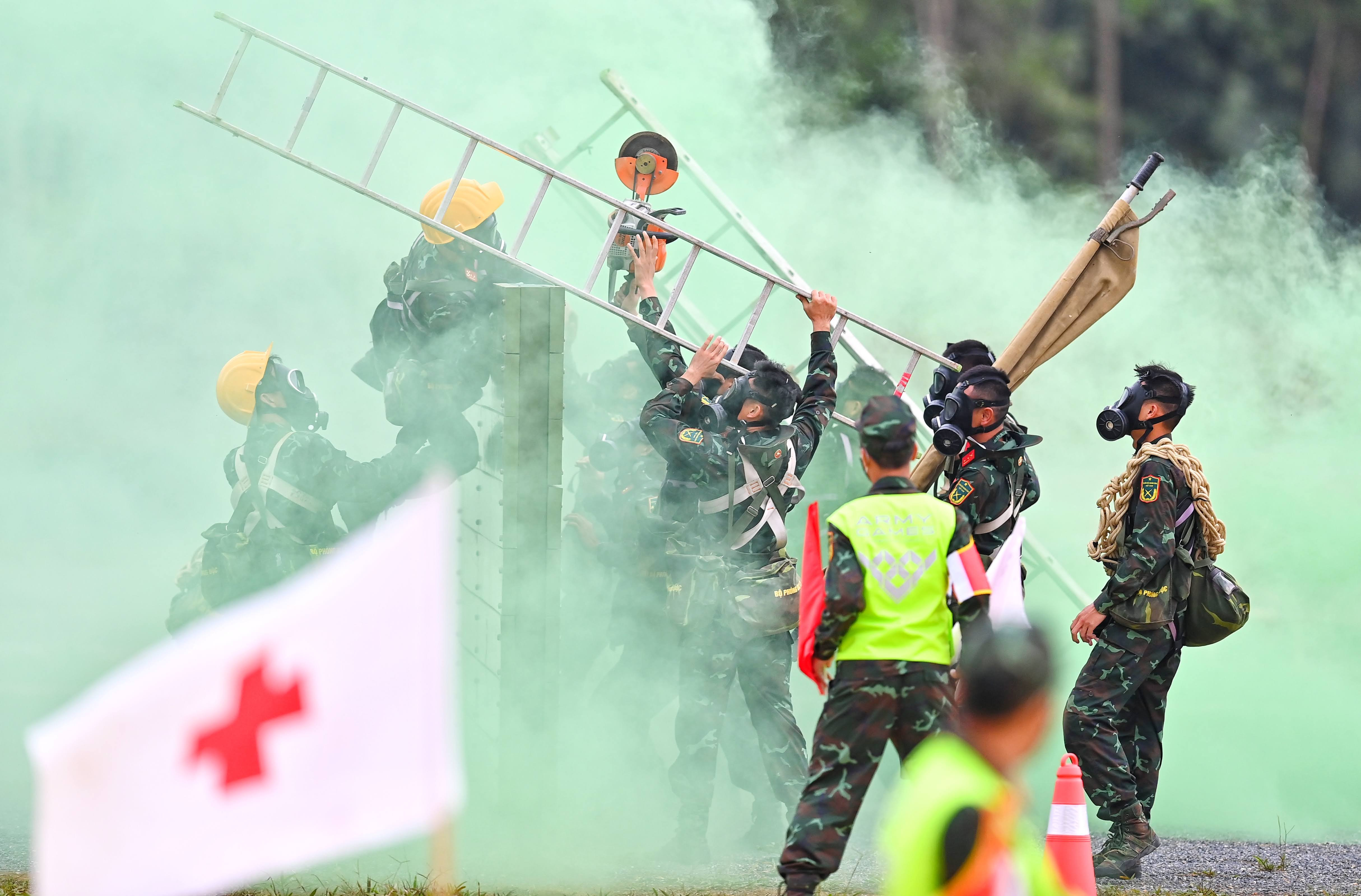
Army Games: Vietnamese soldiers during a competition at the 2021 Army Games held in Hanoi, September 2. Photo by Giang Huy.
For this year’s Games, Vietnam hosted two contests, the “Sniping Frontier” and the “Military Medical Relay Race,” with the participation of around 150 soldiers from eight countries – Bangladesh, Belarus, Laos, Republic of Mali, Russia, Uzbekistan and Venezuela – from Aug. 31 to Sep. 4.
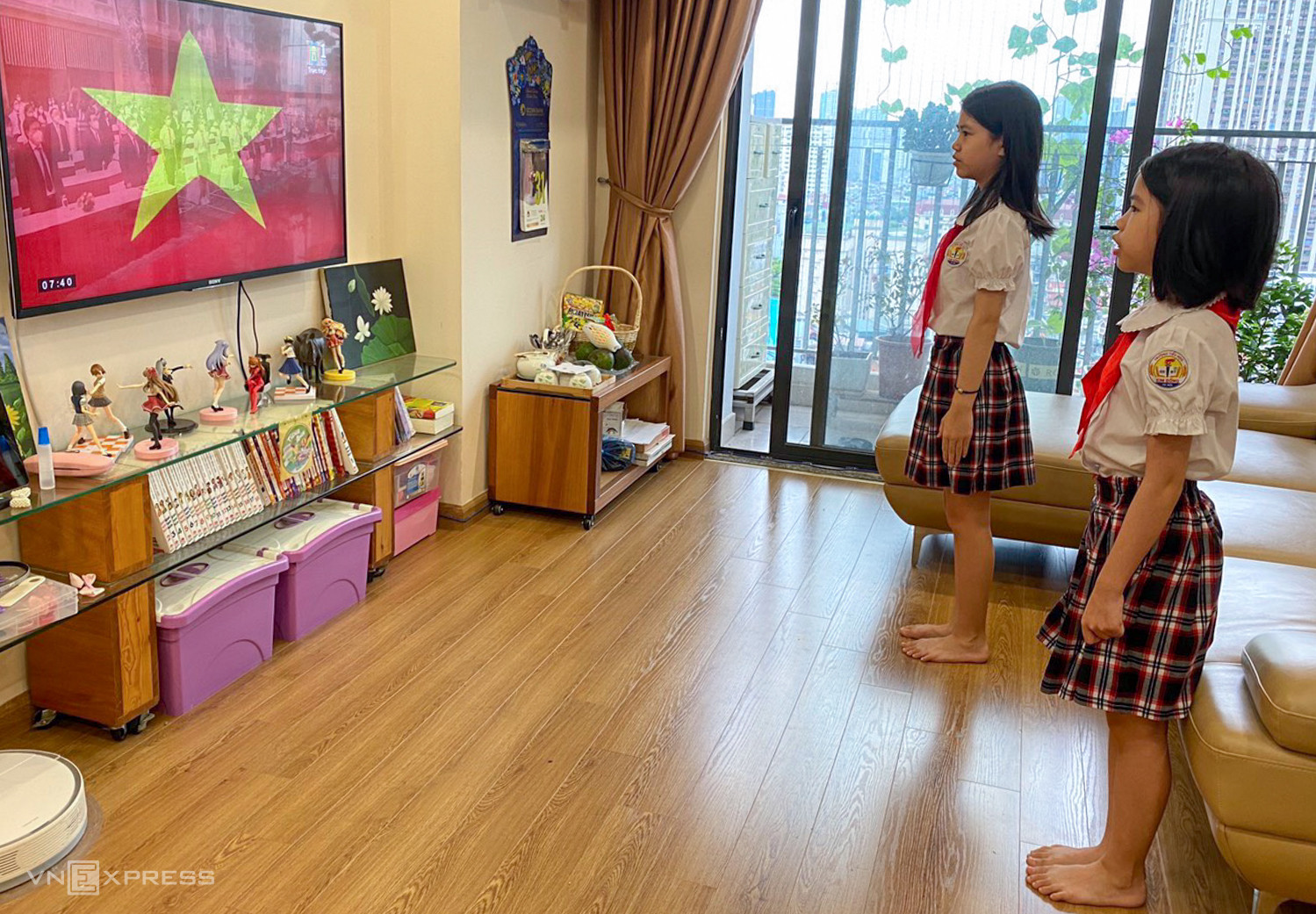
Home schooling: Students of the Kim Dong Primary School in Hanoi’s Ba Dinh District at a new school year opening ceremony that was held online due to the fourth Covid-19 wave, September 5. Photo by Bui Bich Phuong
As more than 20 million Vietnamese students began the 2021-2022 academic year, the ongoing pandemic forced many schools to cancel their opening ceremonies, scale them down or go virtual.

Festive spirit: A woman and a girl have managed to procure a star lantern on Hang Ma Street of Hanoi’s Hoan Kiem District, which is the place to go for lanterns and other accoutrements for the Mid-Autumn Festival, September 19. Photo by Giang Huy.
As Hoan Kiem was among nine districts deemed at high risk for Covid-19 infections, social distancing measures were still in place by then and no shops on Hang Ma are allowed to open and run the business, which is classified “non-essential.”
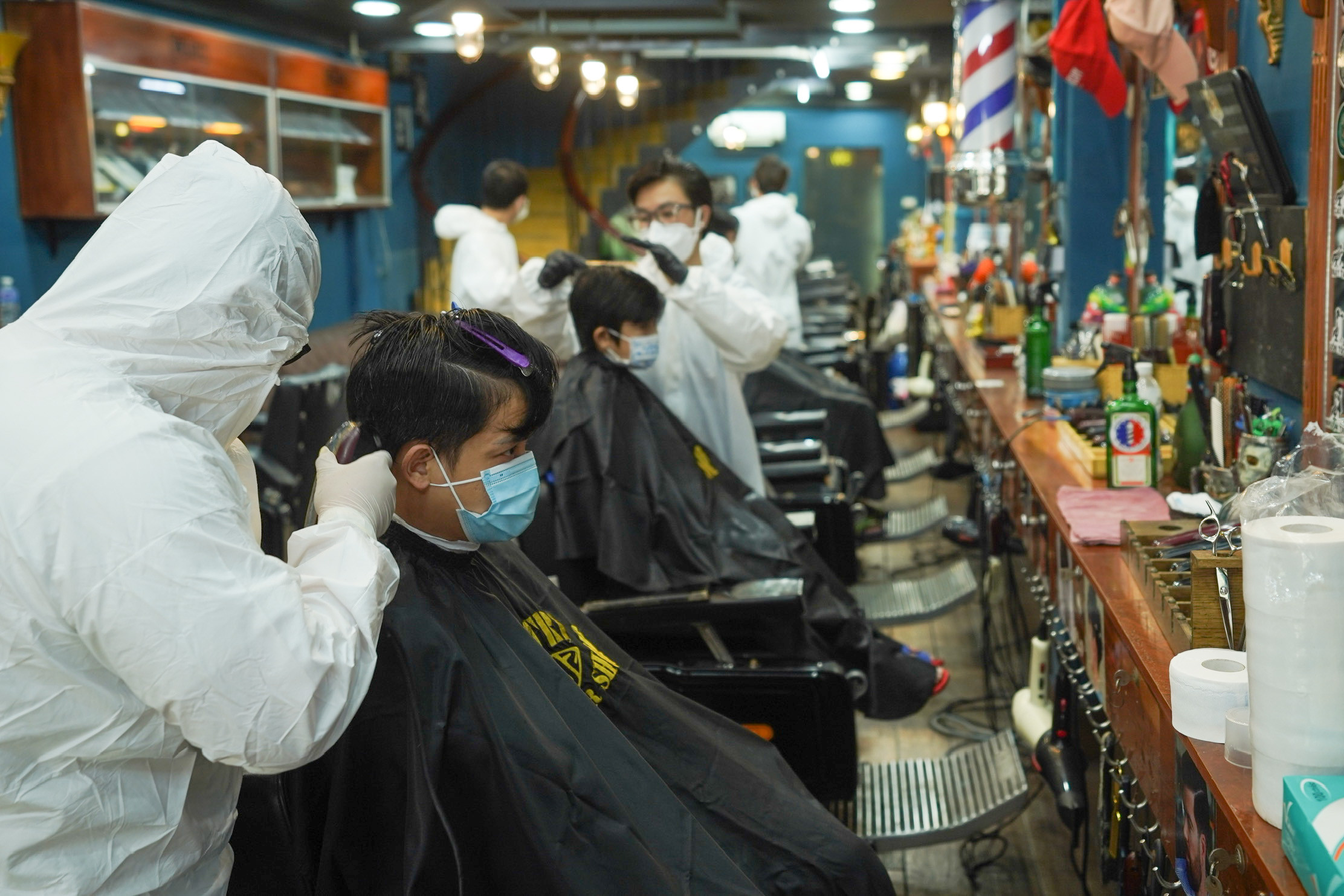
Cutting edge: Masks and protective clothes were the latest ‘new normal’ equipment at a barbershop in HCMC on October 1 after the city reopened after four months of social distancing at various levels. Photo by VnExpress/Quynh Tran

Reverse migration: Mekong Delta dwellers are stopped at a Covid-19 checkpoint at the HCMC gateway in Binh Chanh District as they make their way home on October 1. Photo by Quynh Tran
With the Covid-19 outbreak deemed under control in the industrial hubs of HCMC and its neighbors, all localities hit hardest by the fourth wave, social distancing measures were eased early October, and tens of thousands of migrant workers decided to get back to their hometowns.
In most cases, returnees explained they had run out of money after losing their jobs due to the Covid-19 outbreak, and that home was their safest bet now. Besides, they were all afraid of yet another outbreak when restrictions were loosened, which means they would continue to be stuck in their small rented rooms under strict social distancing with zero income and greater fear of the pandemic.

Veggie bars: A customer buys veggies and fruits from an erstwhile bar on Bui Vien Street, HCMC’s busiest night-time hotspot for both foreign tourists and locals, October 5. Photo by VnExpress/Quynh Tran
To contain Covid-19, HCMC shut down all bars, karaoke parlors and non-essential services in May. In response to such prolonged business restrictions, a dozen or so bars that used to serve beer and other liquor switched to selling vegetables and fruits.
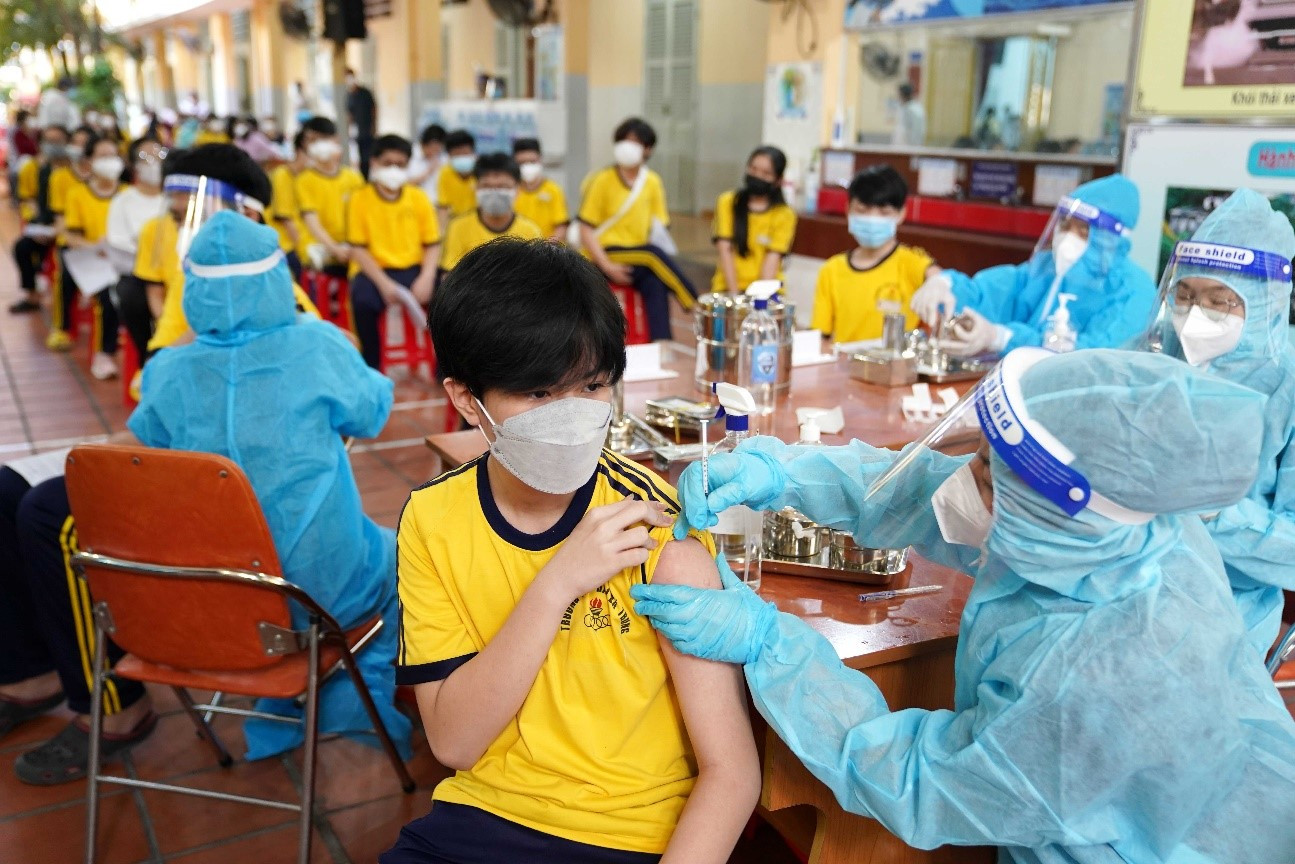
No kid’s play: Students of the Hai Ba Trung Secondary School in District 3, HCMC get Covid-19 vaccine shots, October 31. Photo by the HCMC Center for Disease Control and Prevention.
Vietnam started vaccinating people under 18 against Covid-19 on October 27.
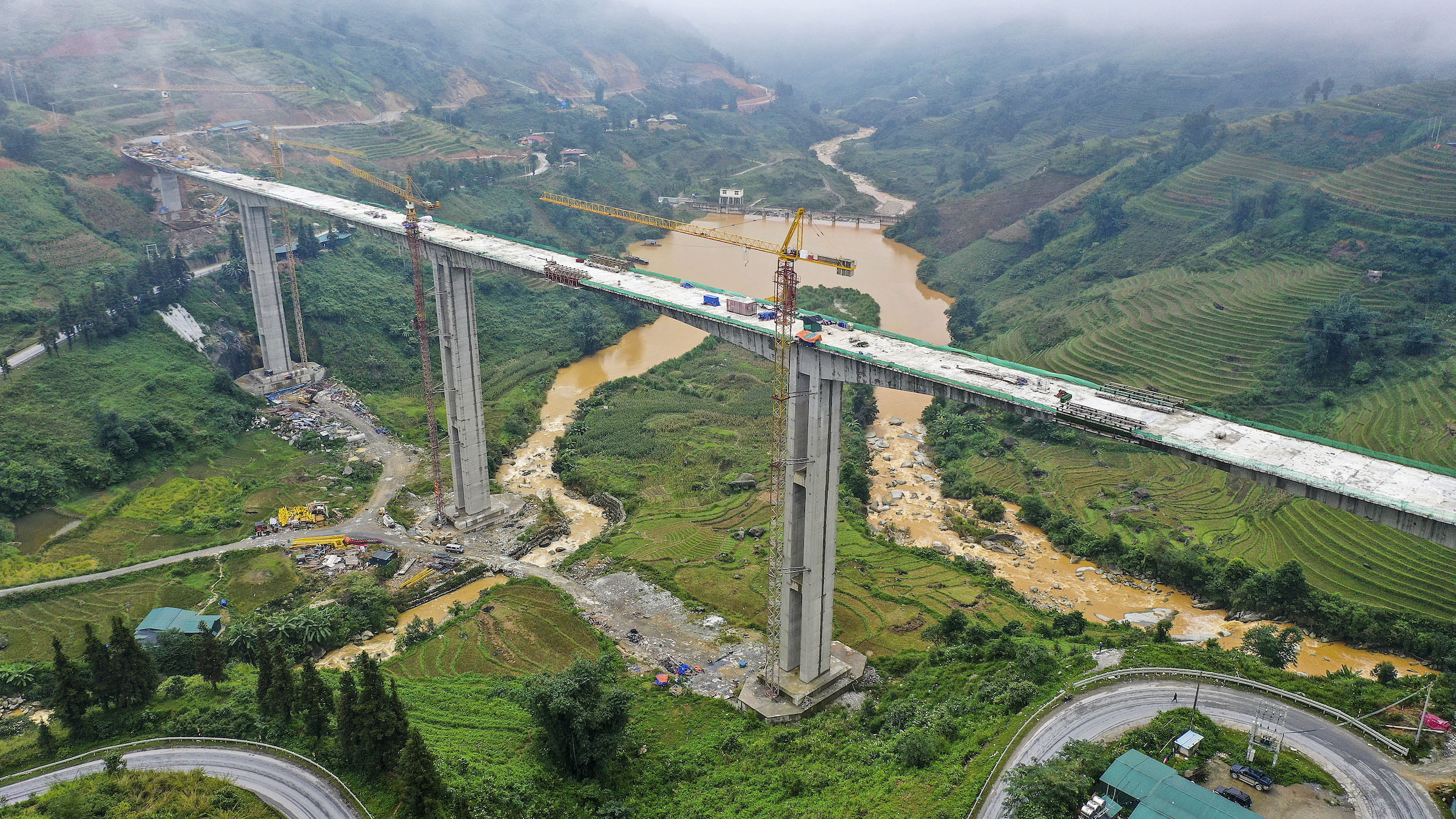
Standing tall: The Mong Sen Bridge that links with the Noi Bai - Lao Cai Expressway connecting Hanoi with the northwest province of Lao Cai, home to the tourist town Sa Pa, is in the final stage of construction, November 3. With its highest pier rising 83 meters, it is now the tallest viaduct in Vietnam. Photo by Giang Huy
Set for completion by the end of this year, the viaduct is built of reinforced concrete. It is 612 meters long with five continuous spans and 14 meters wide with four lanes. The bridge crosses two hills to run past a hydroelectric power station as well as many of Sa Pa’s famous rice terraces.

In remembrance: HCMC residents float lanterns on the Nhieu Loc – Thi Nghe Canal as part of activities held in the two biggest cities of HCMC and Hanoi on November 19 to commemorate those who have lost their lives to Covid-19. Photo by VnExpress/Nhat Thuc
Vietnam has recorded almost 30,000 Covid-19 fatalities, including nearly 19,300 in HCMC. Most of the deaths happened during the latest wave.

Tourism revival: Foreign visitors walk the streets of Hoi An Town, one of Vietnam’s top tourist attractions in central Quang Nam Province, November 20. Photo by VnExpress/Duy Hau
These foreigners were the first international tourists to arrive in Vietnam since the country closed its borders in March last year to fight Covid-19. Quang Nam is one of five localities that have been approved by the government to welcome back fully immunized tourists starting November. The others are Kien Giang, Khanh Hoa, Quang Ninh and Da Nang.
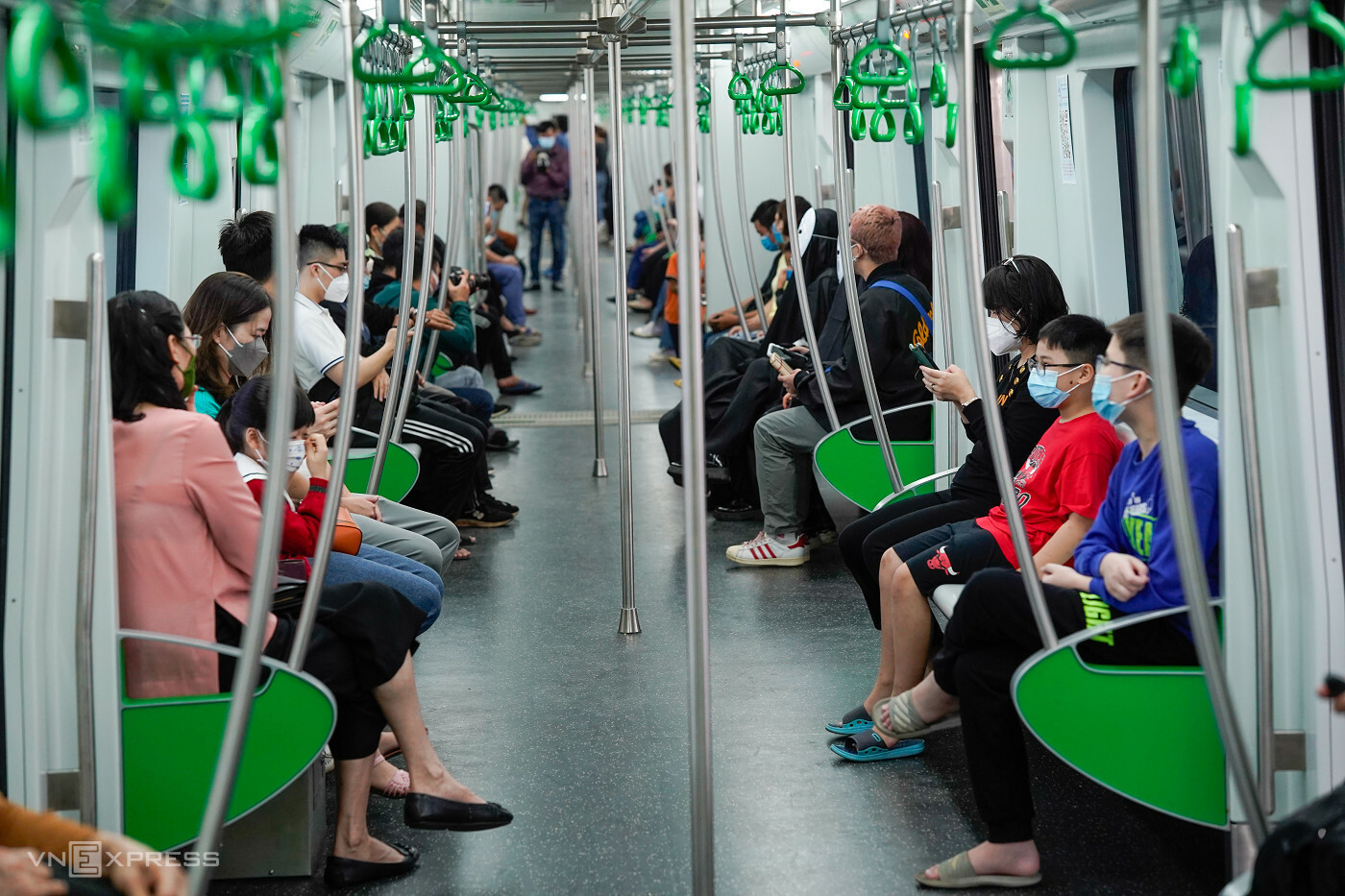
On track: Passengers ride Vietnam’s first ever metro line (Cat Linh – Ha Dong) in Hanoi on November 21. Photo by Pham Chieu
The much-anticipated line was launched November 6. Built by China Railway Sixth Group Co Ltd, the project took 10 years to complete, with hurdles and conflicts delaying the work several times.
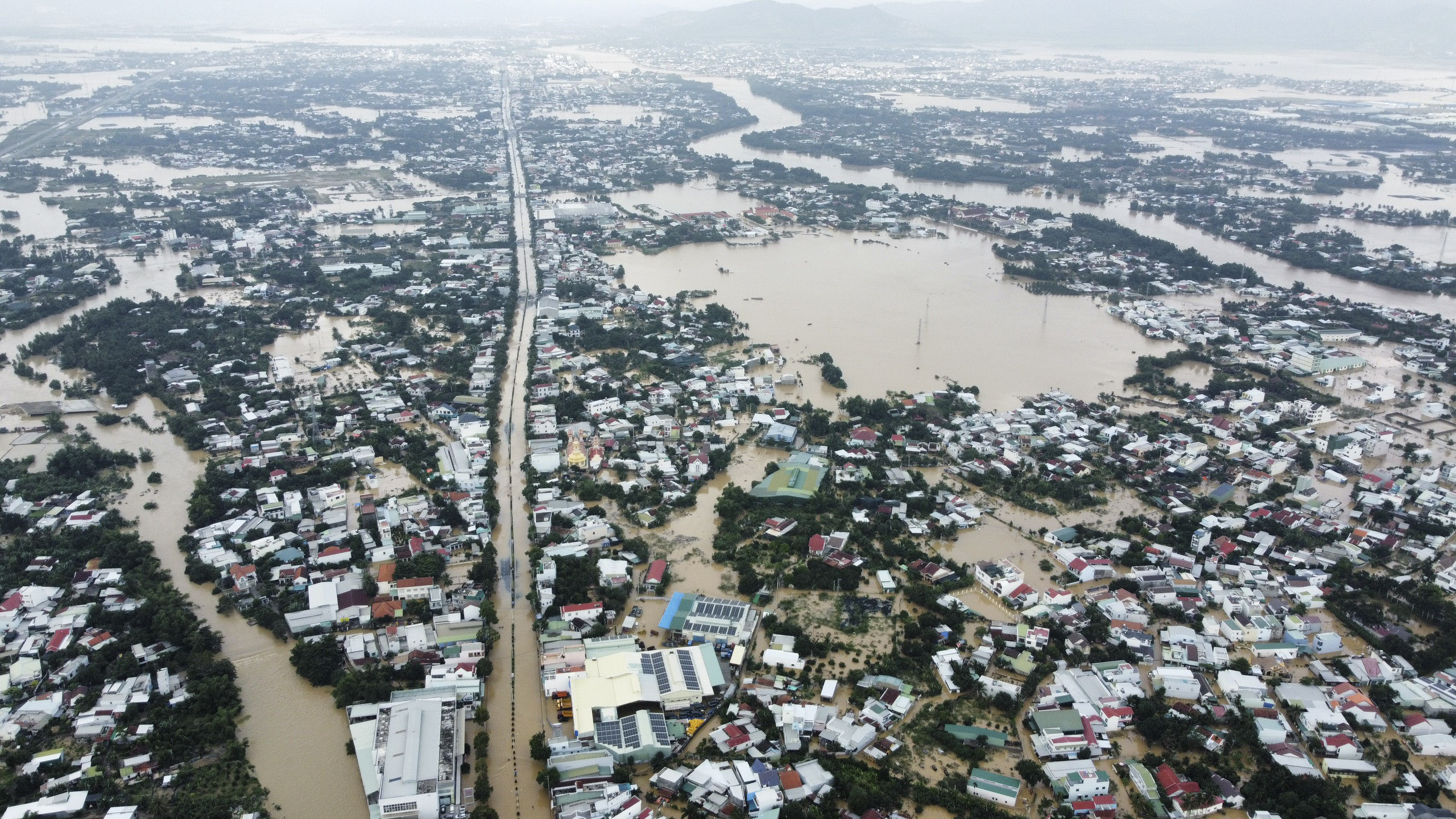
Water everywhere: A part of Nha Trang, a coastal resort town in central Khanh Hoa Province, is inundated by floodwaters on December 1. Photo by Xuan Ngoc
Heavy rains had buffeted central Vietnam and the Central Highlands regions from late November to early December. Rainfall levels had gone up to 375 mm a day in certain areas, triggering floods and landslides that killed at least 11 people. The situation was worsened by several reservoirs releasing water at almost the same time.
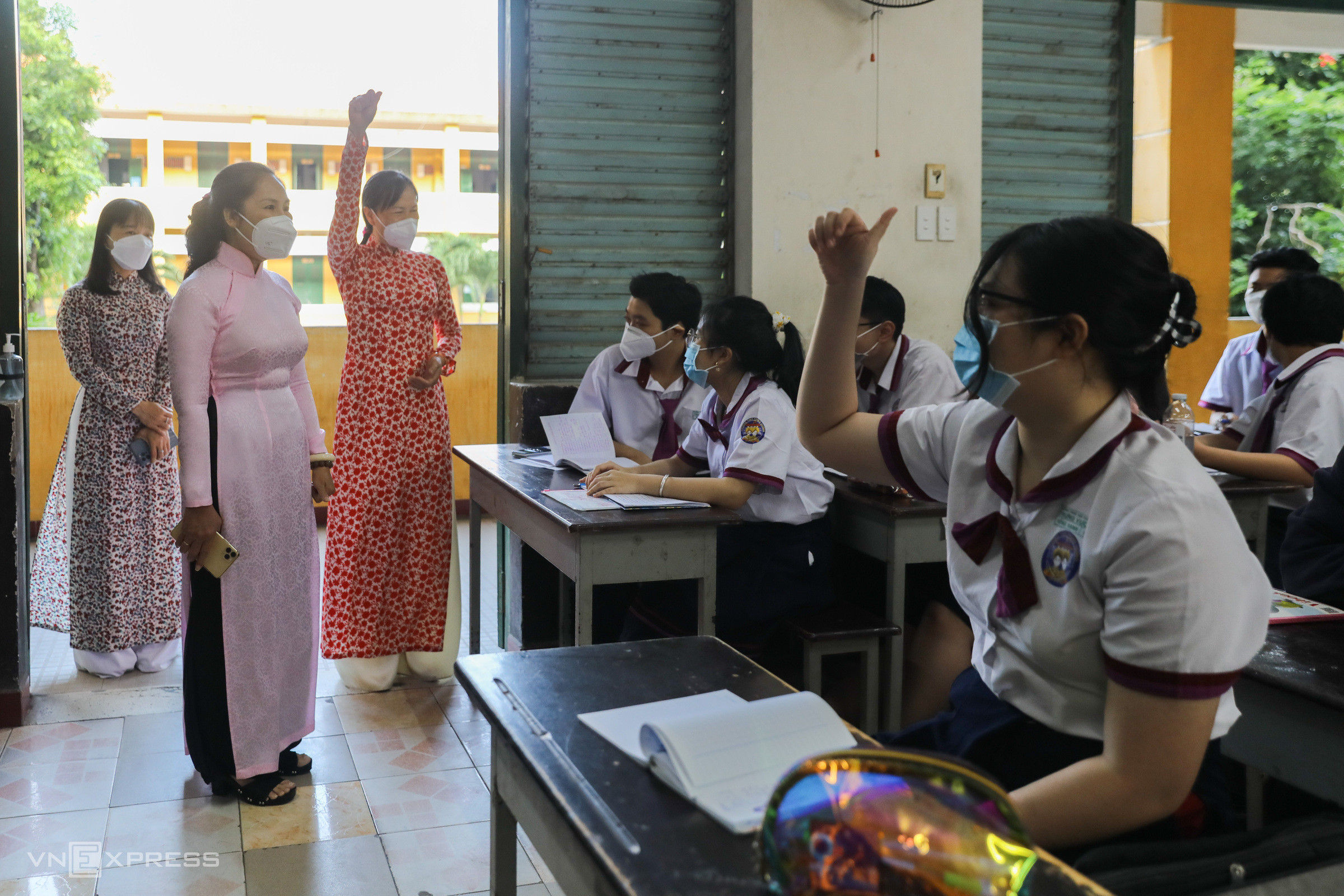
Back to school: Teachers welcome students back to school at Trung Vuong High School in HCMC, December 13. That day, 128,000 ninth and 12th graders in the city, or 90 percent of the total, returned to school after seven months of studying online. Photo by VnExpres/Quynh Tran
Schools have been reopened with precautions taken both inside and outside the classrooms.
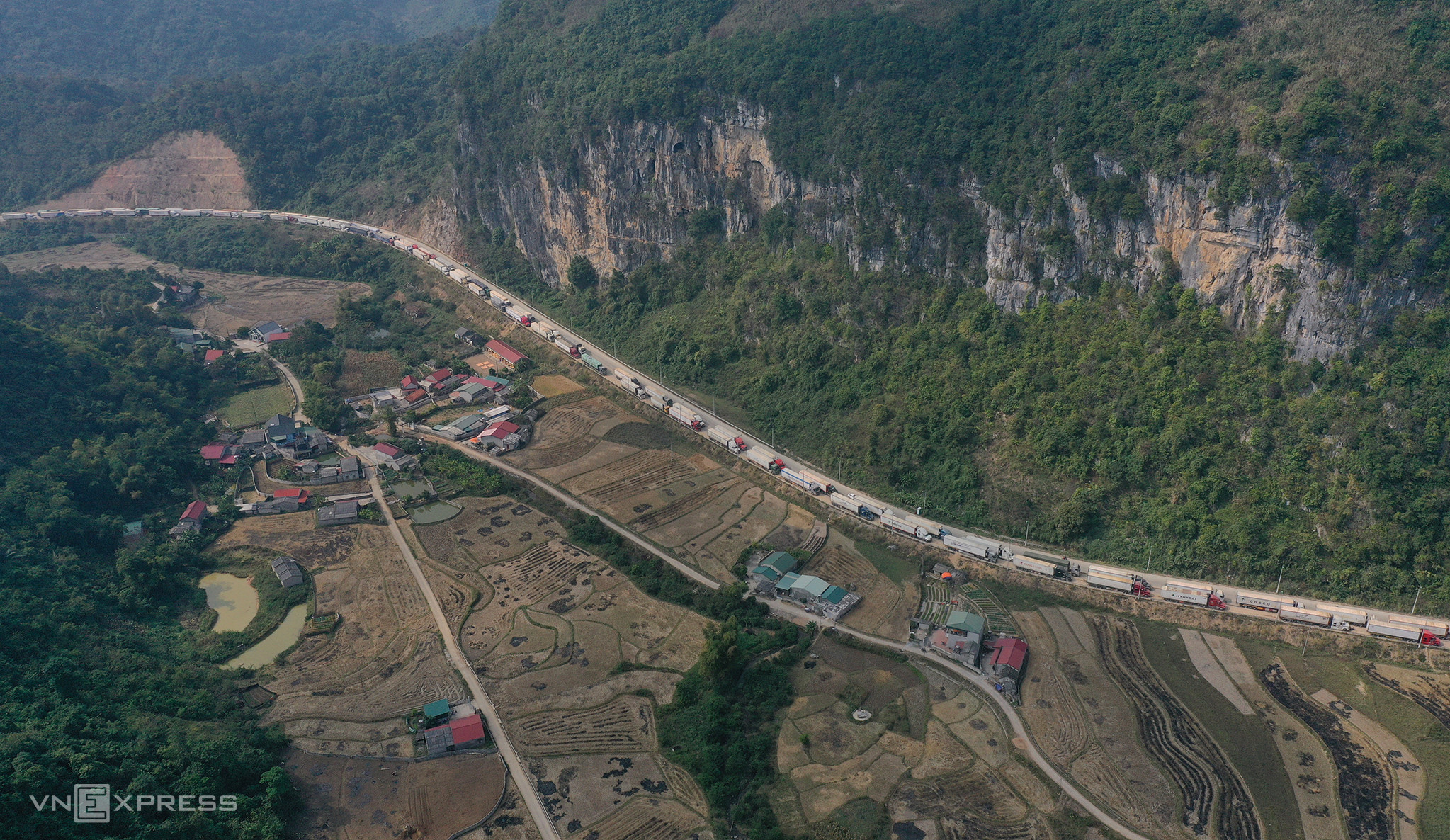
Stuck trucks: Thousands of container trucks stuck at Vietnam’s border gates with China in the northern province of Lang Son, December 16, because of delay in customs clearance caused by Chinese authorities tightening Covid-19 safety measures. Photo by Ngoc Thanh
After the fourth Covid-19 wave hit Vietnam late April, China has been increasing inspections and disinfection of goods and means of transpucort and drivers from the country.
They are also tightening the management and traceability of goods, which has contributed to lengthening customs clearance procedures.



